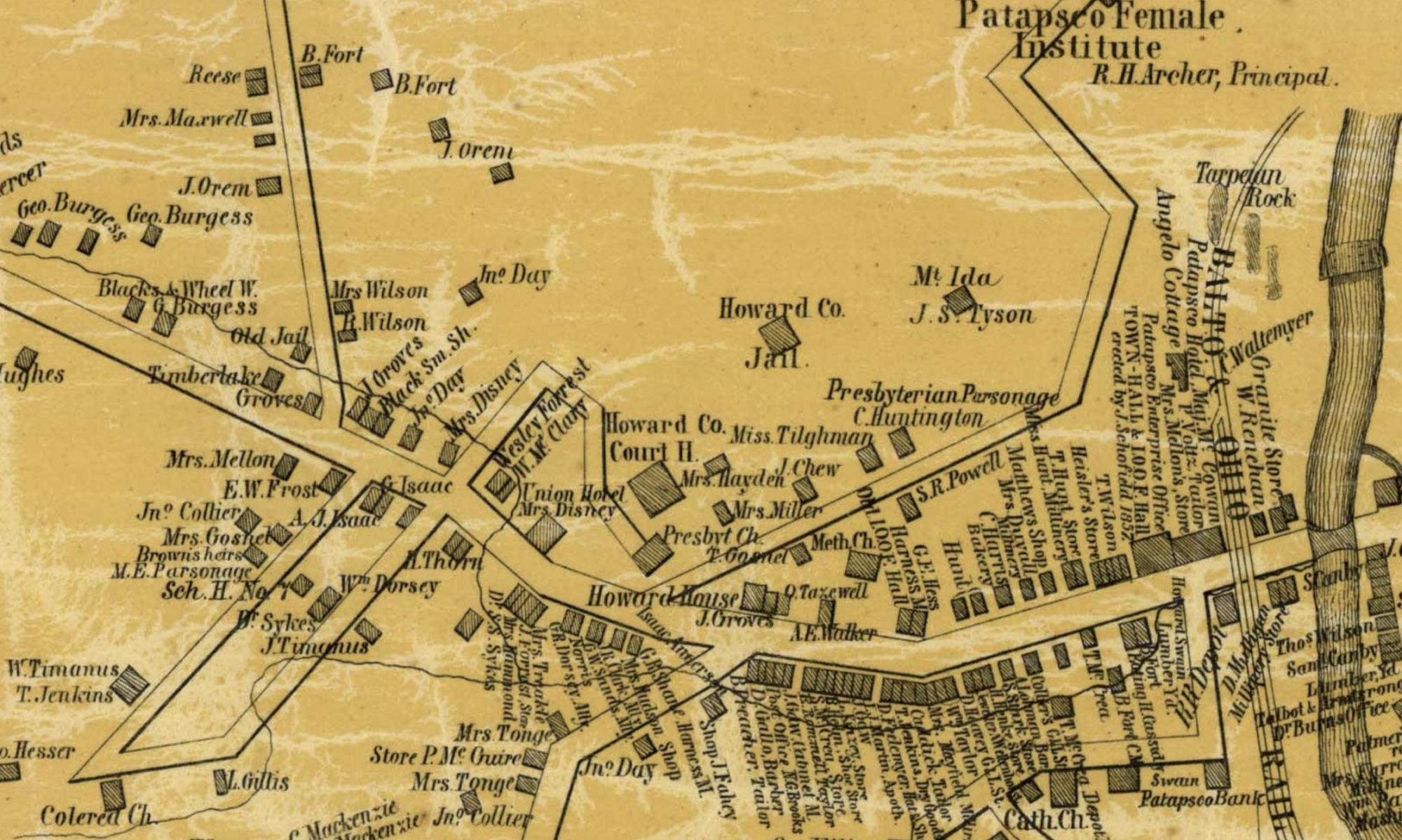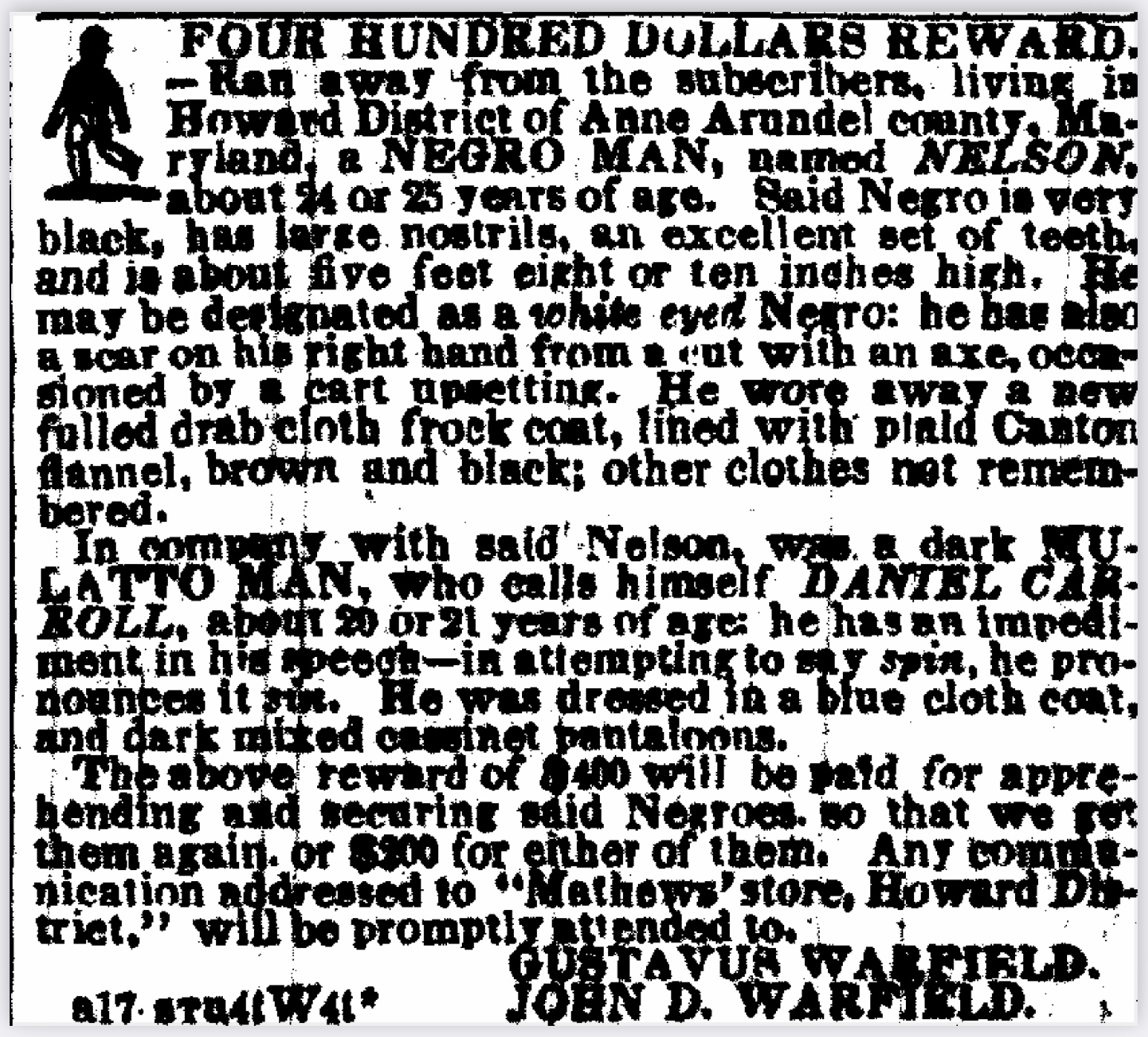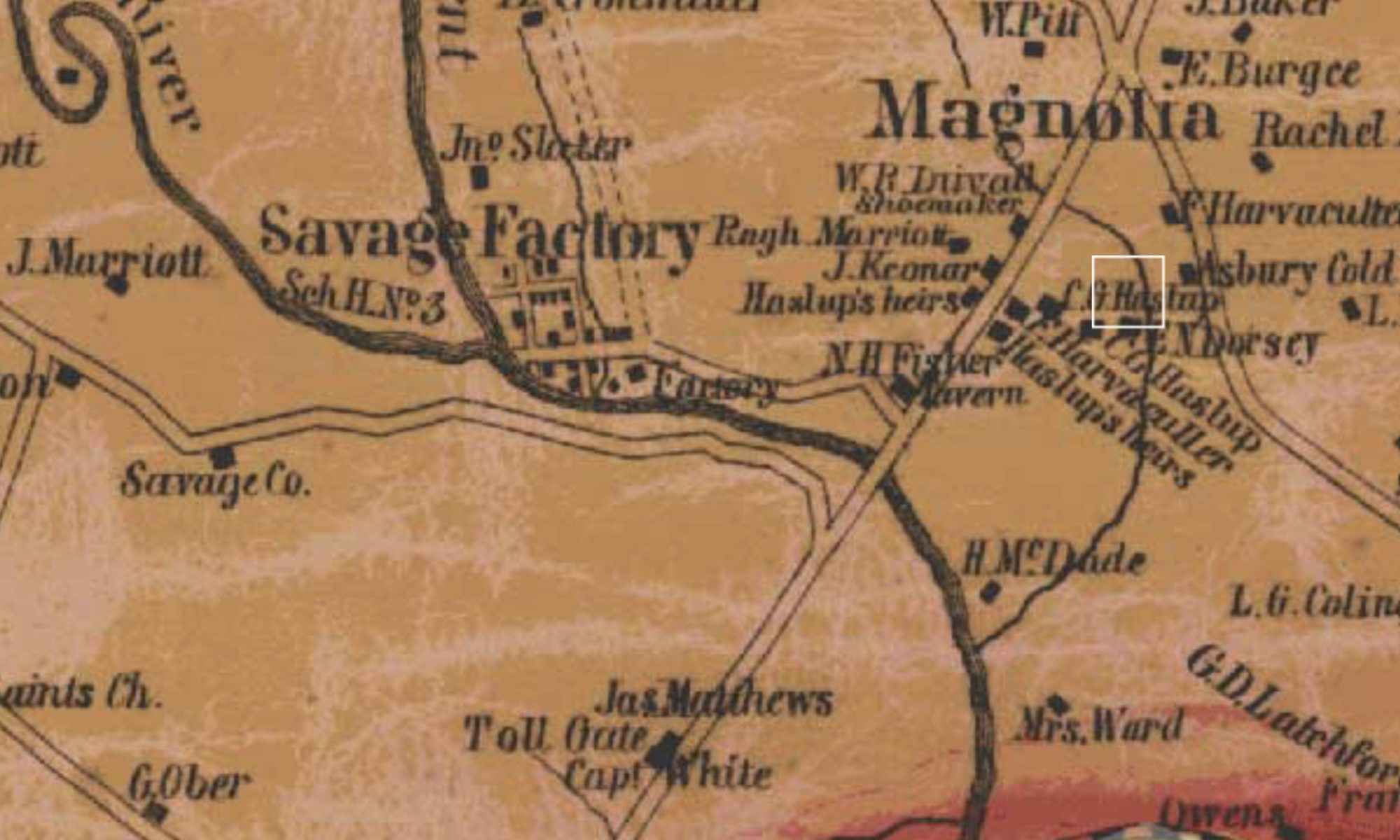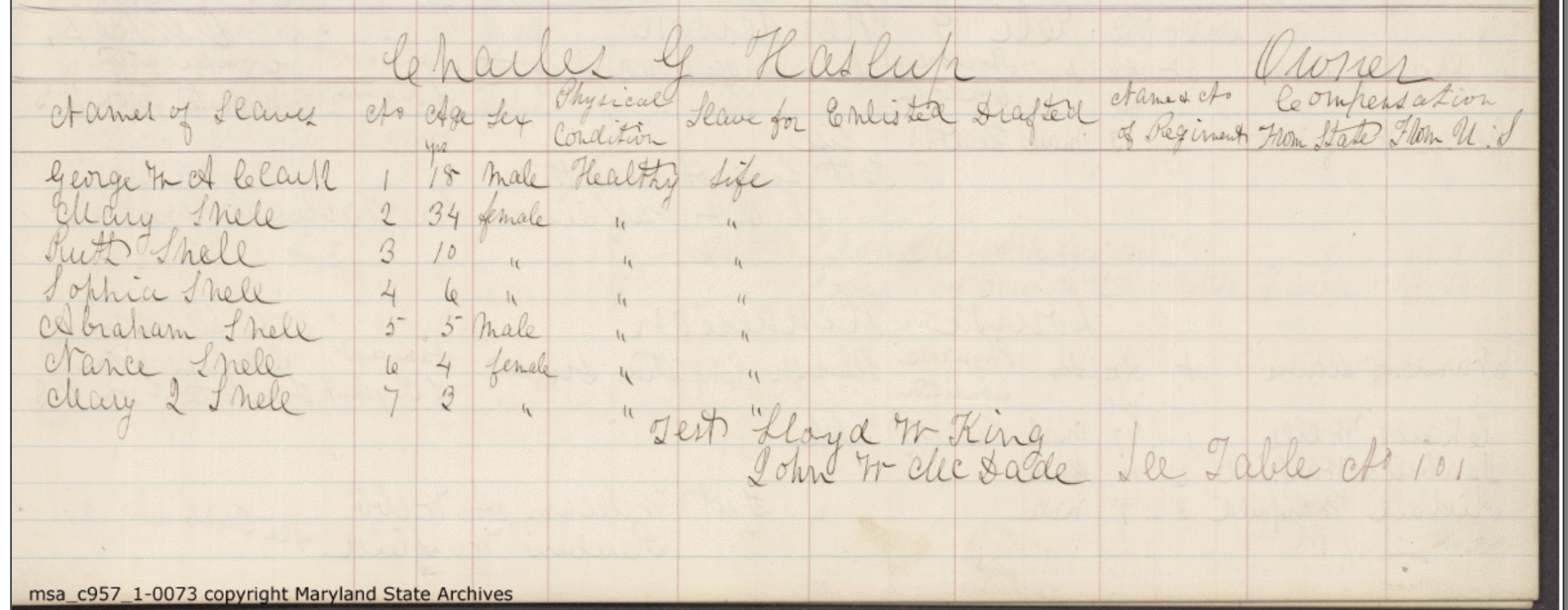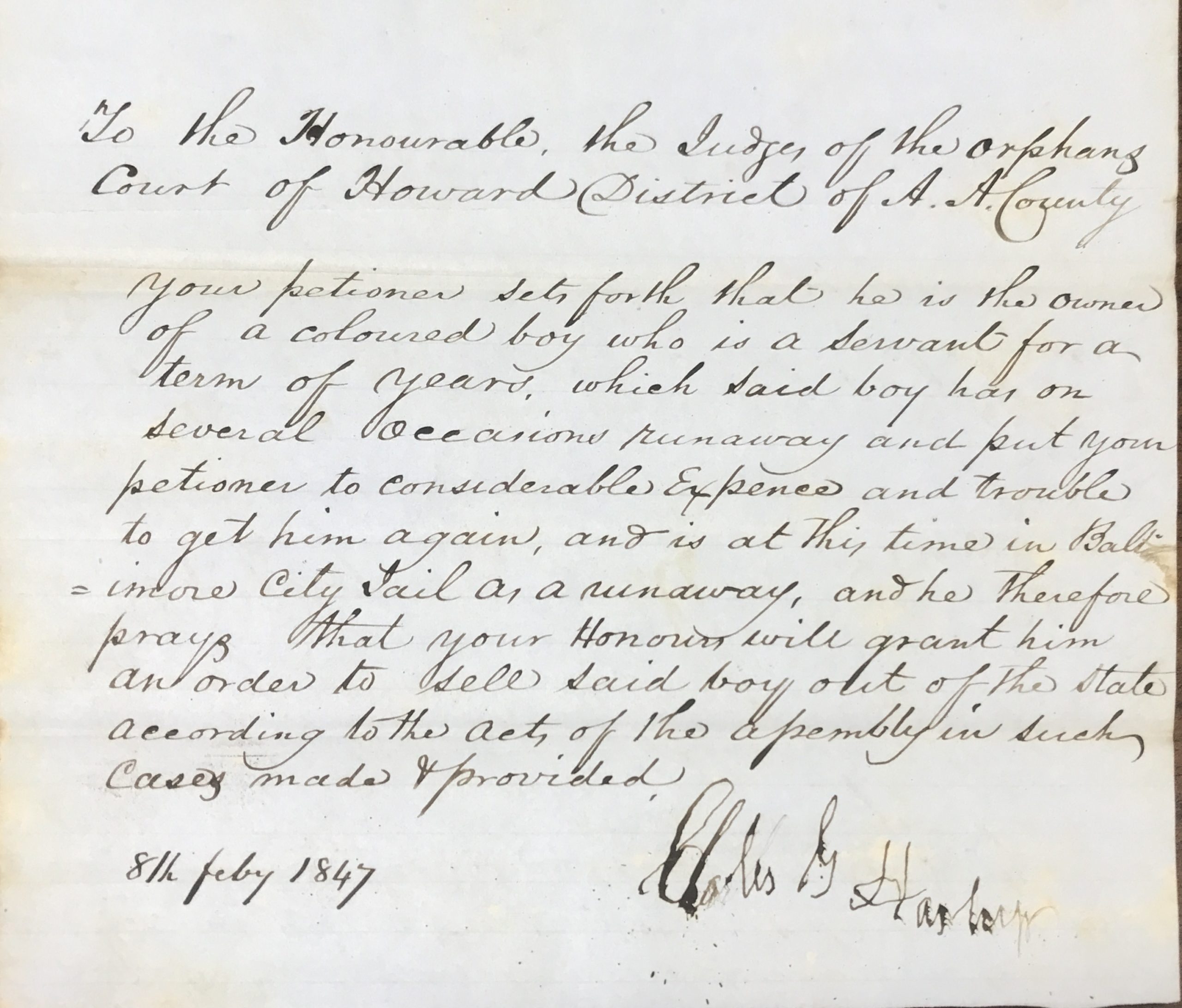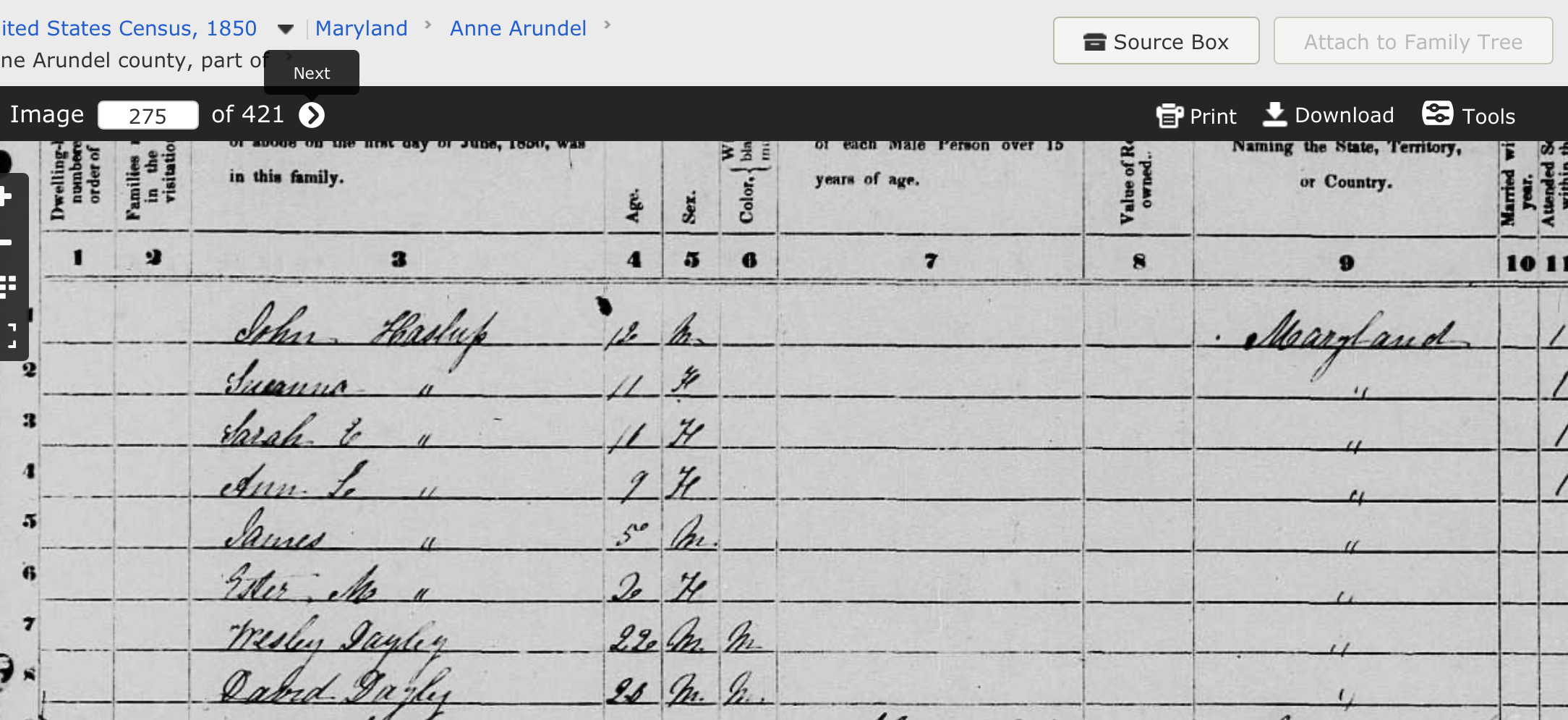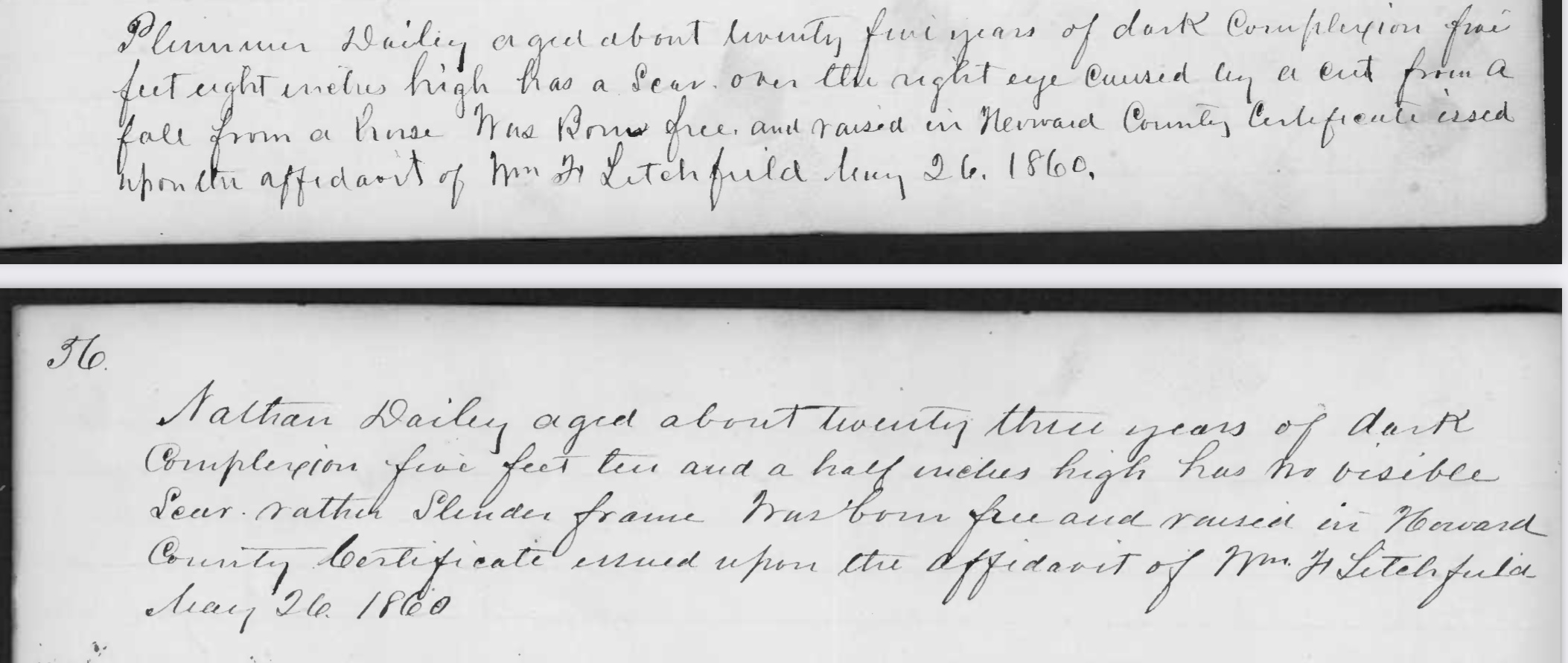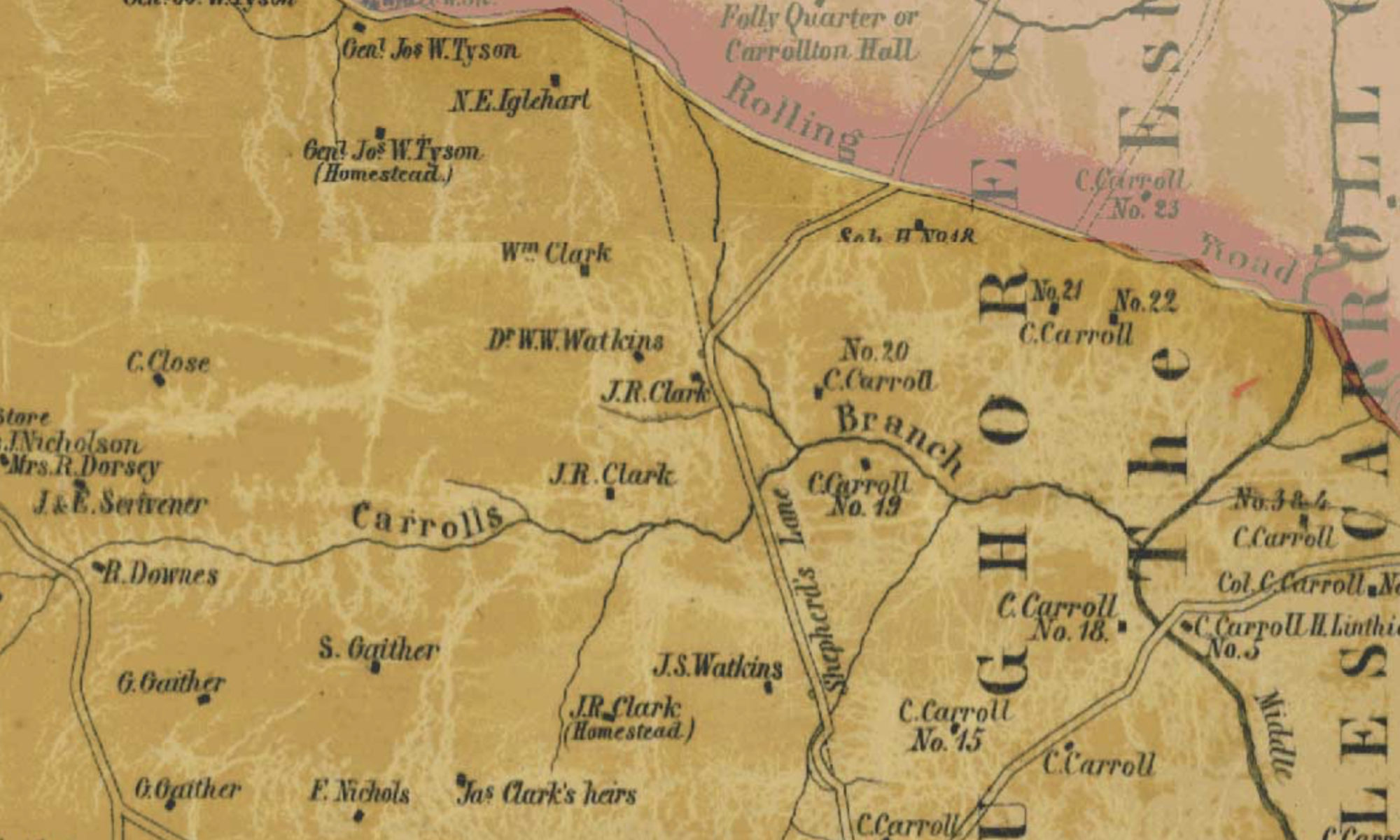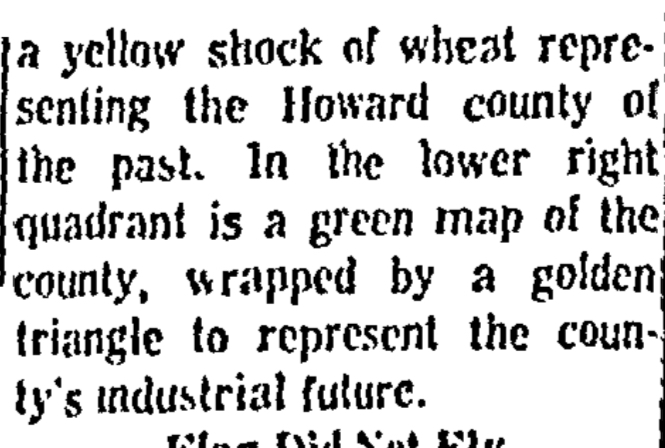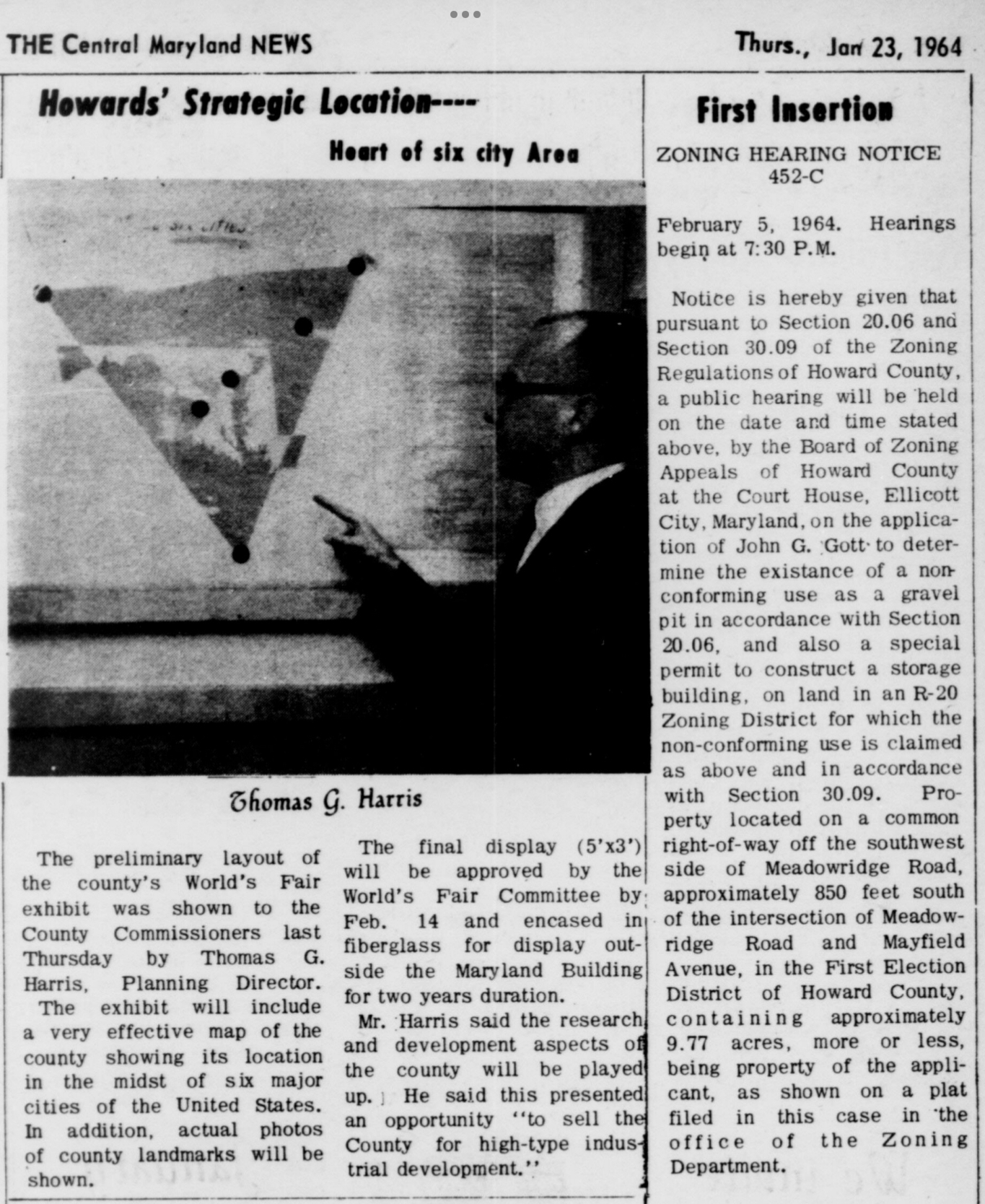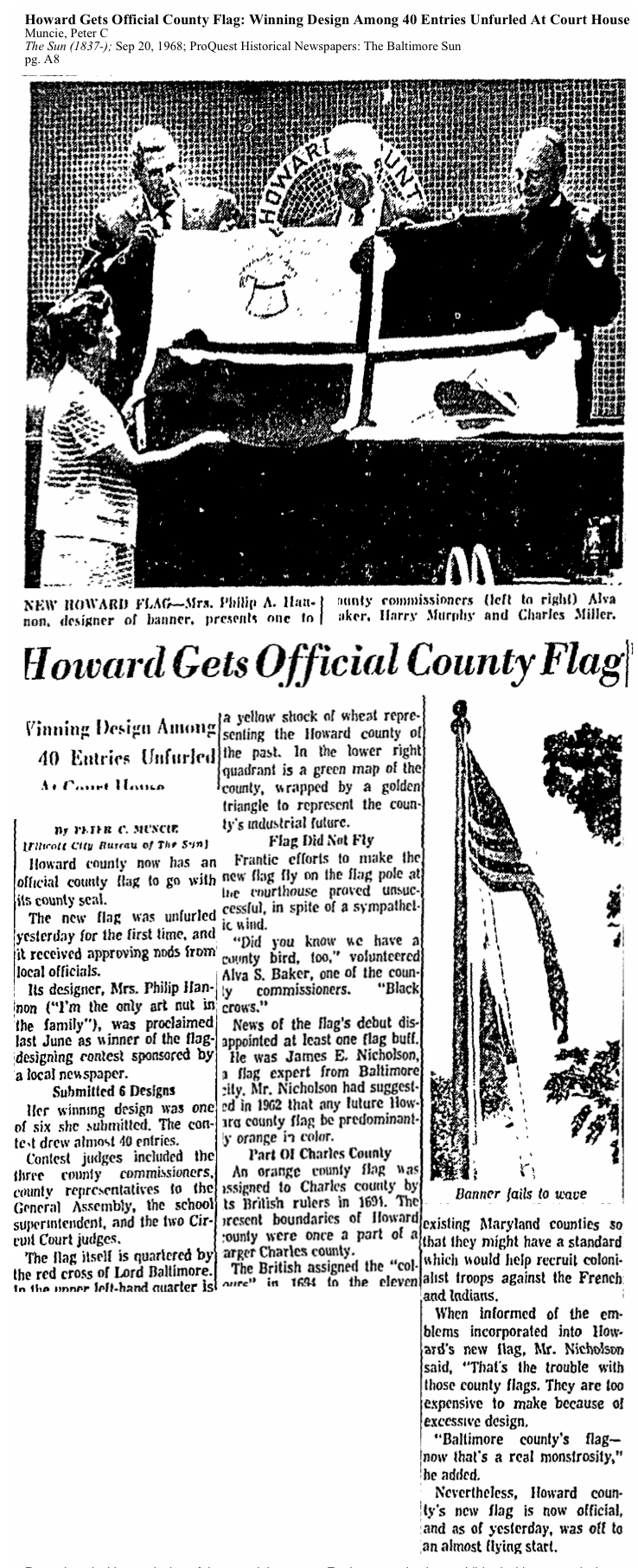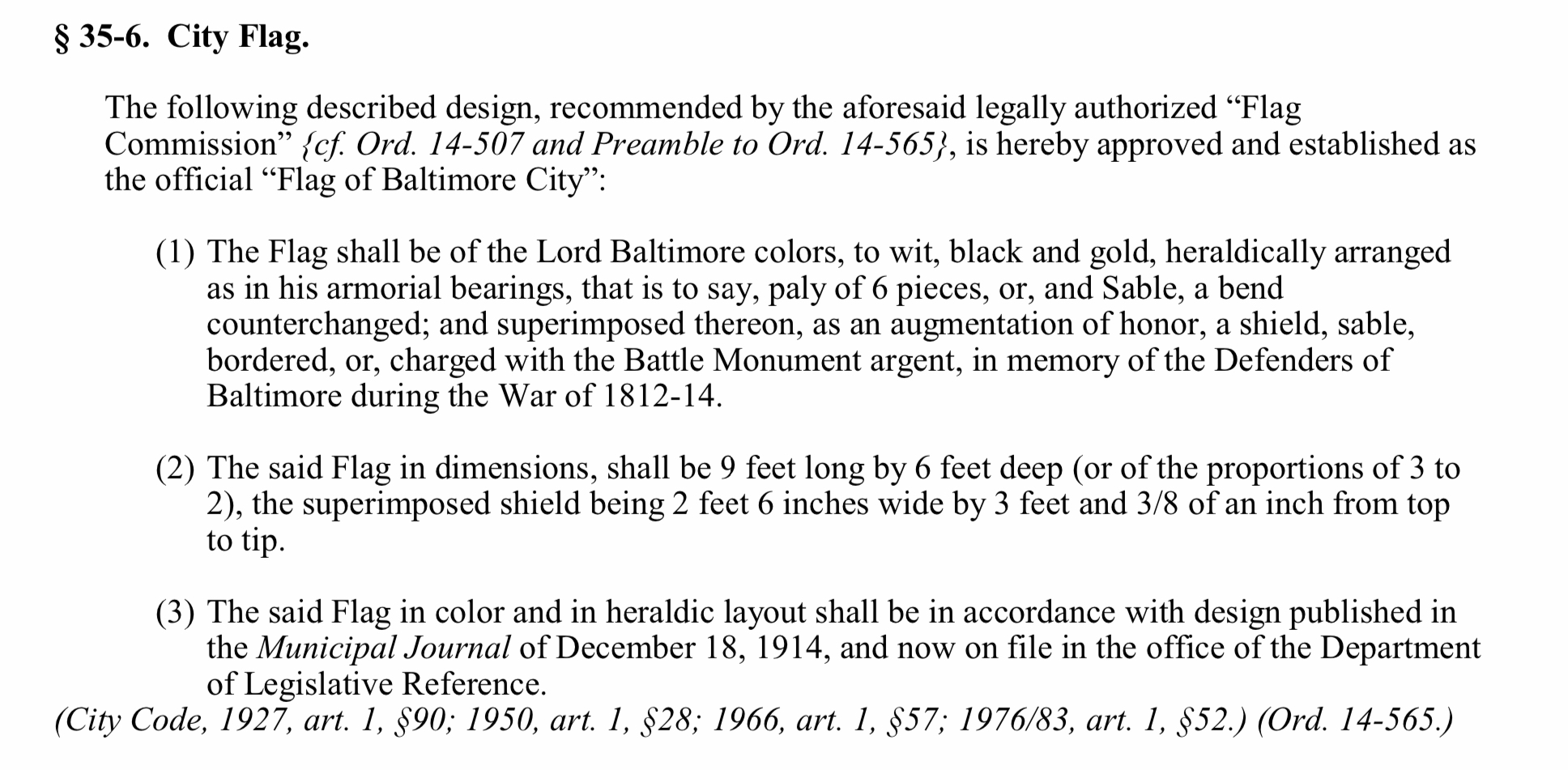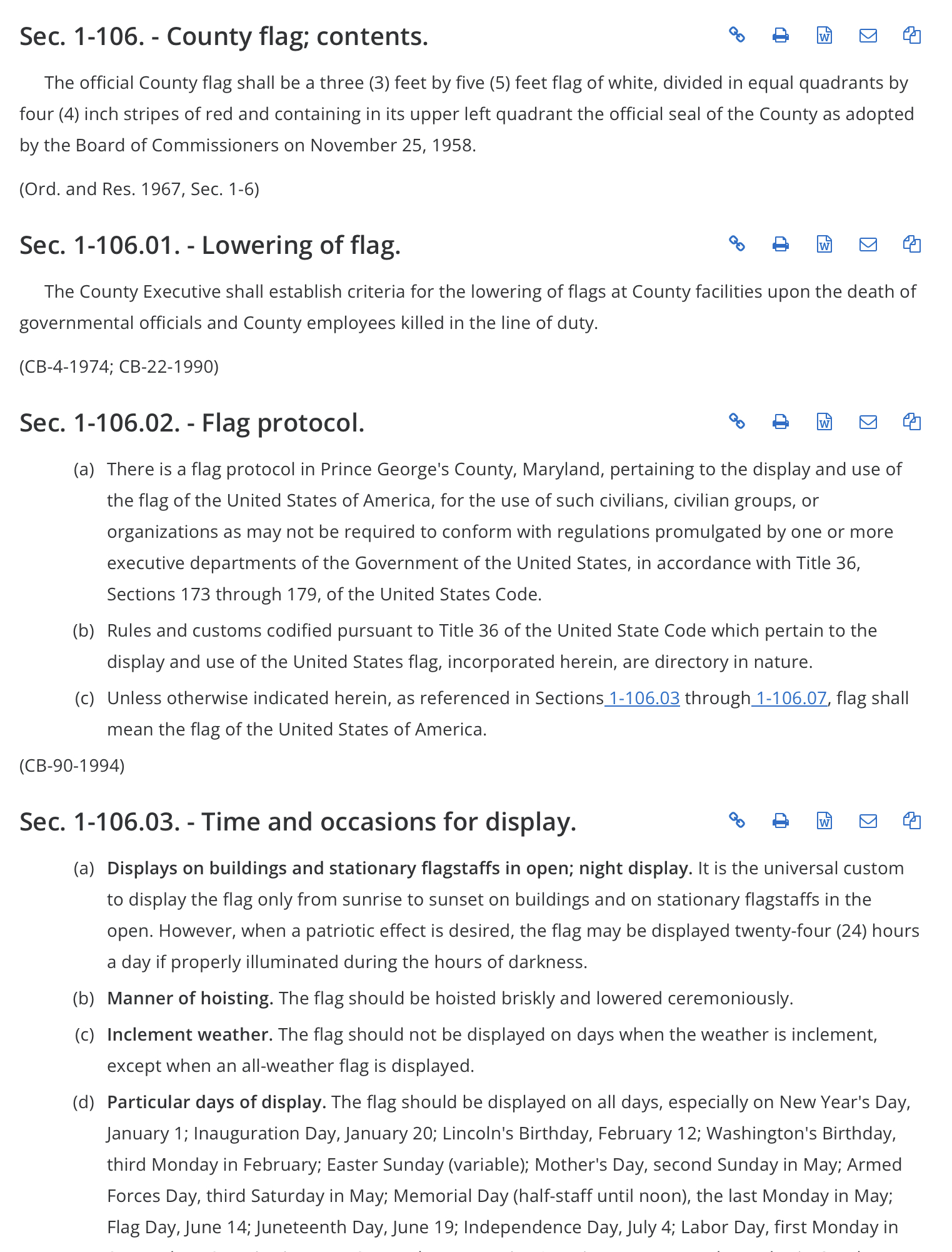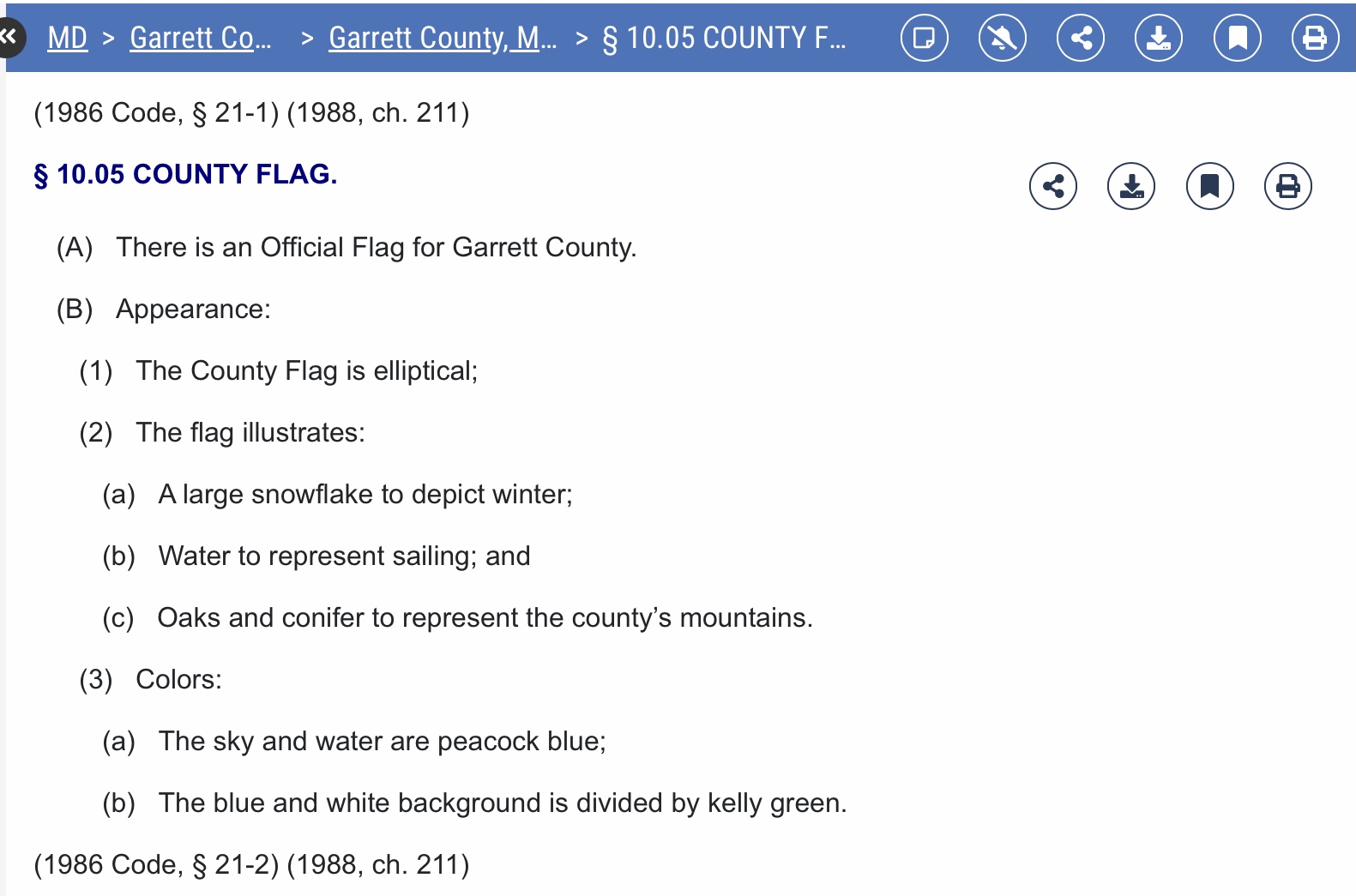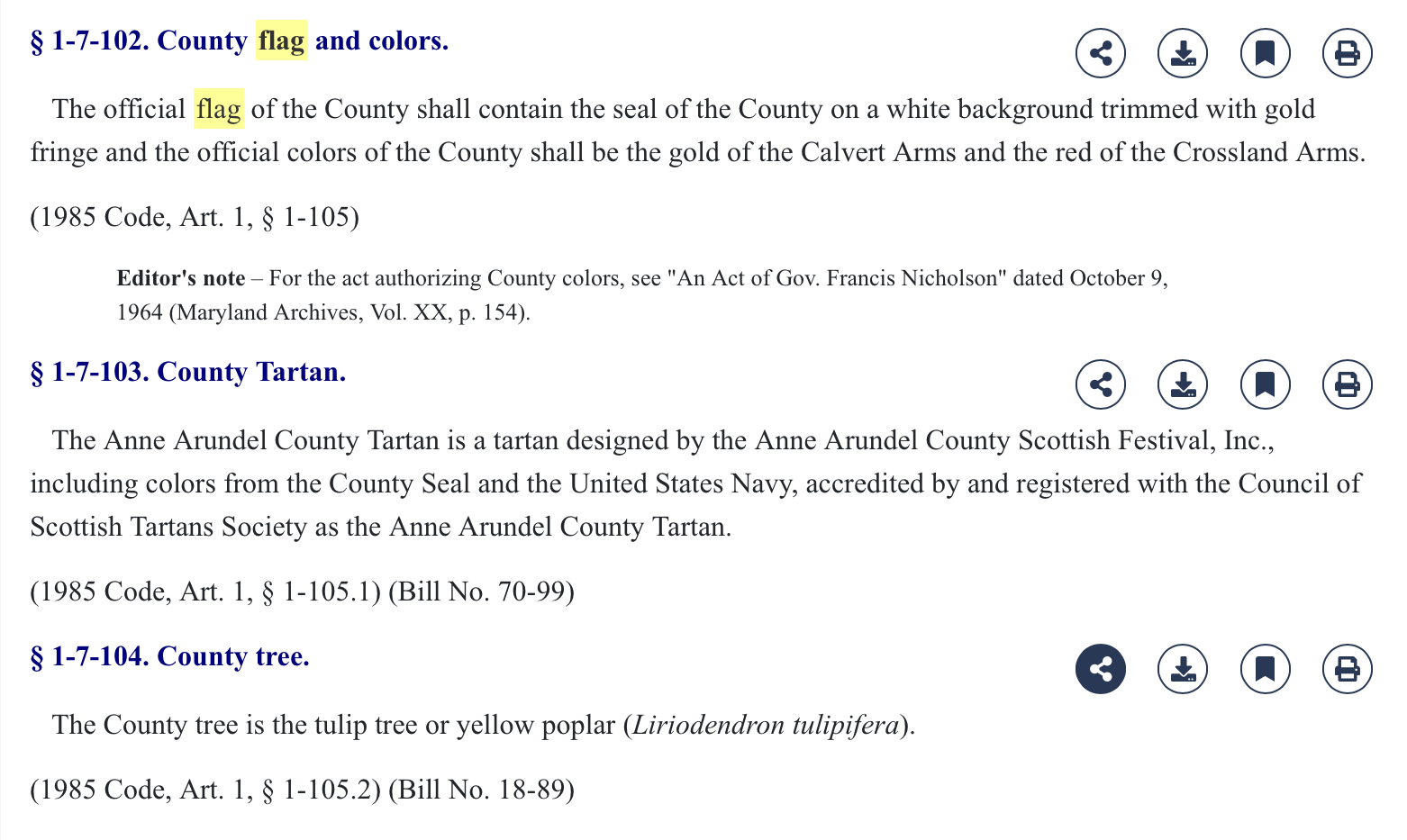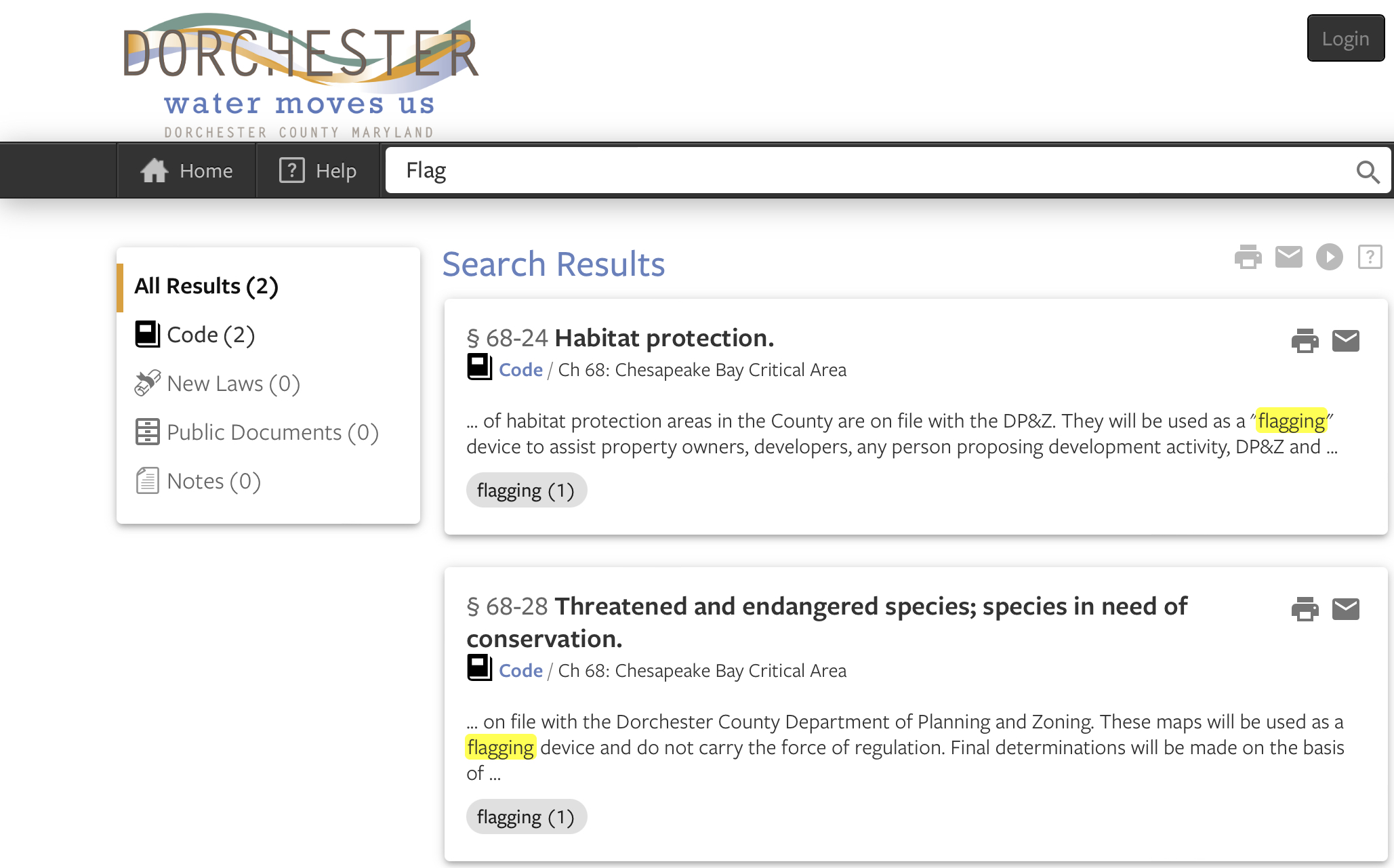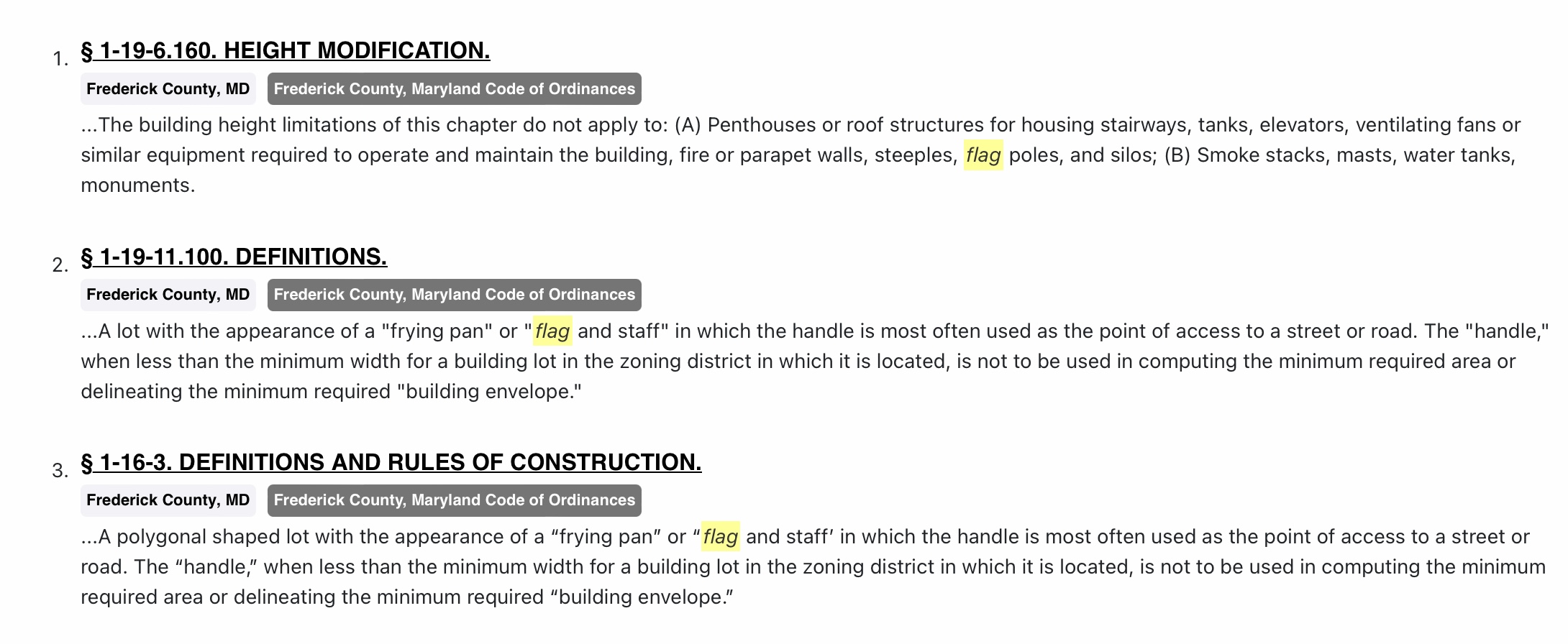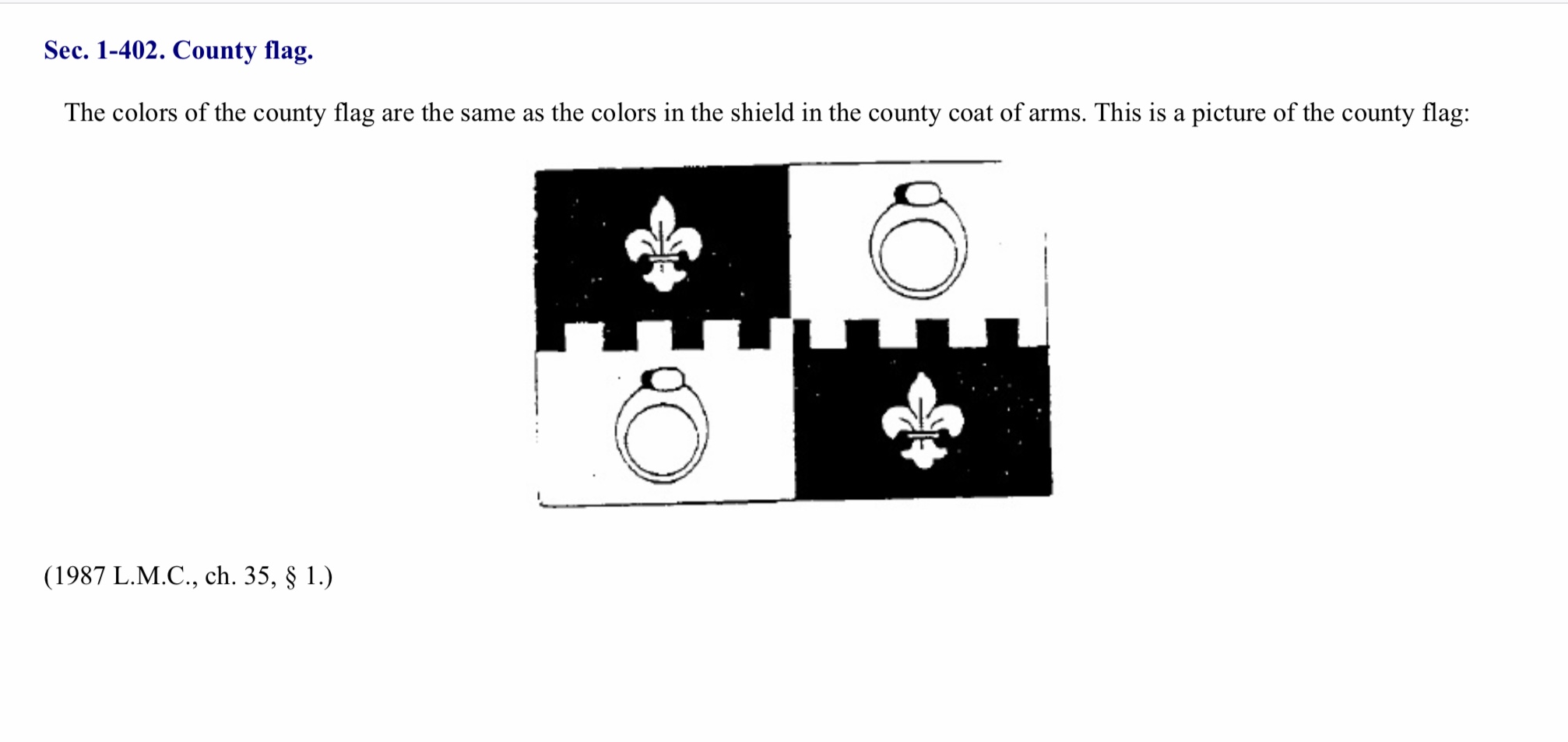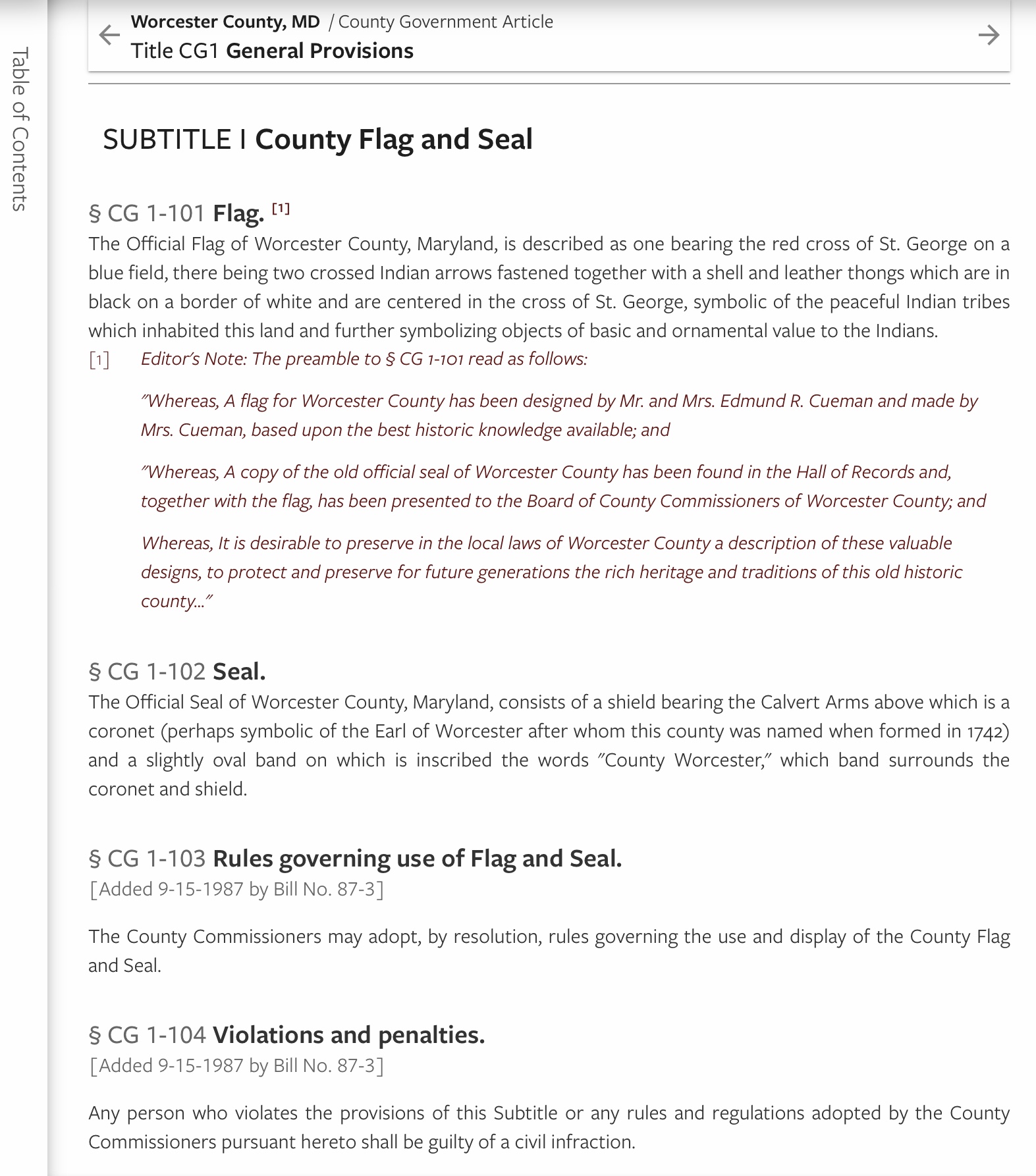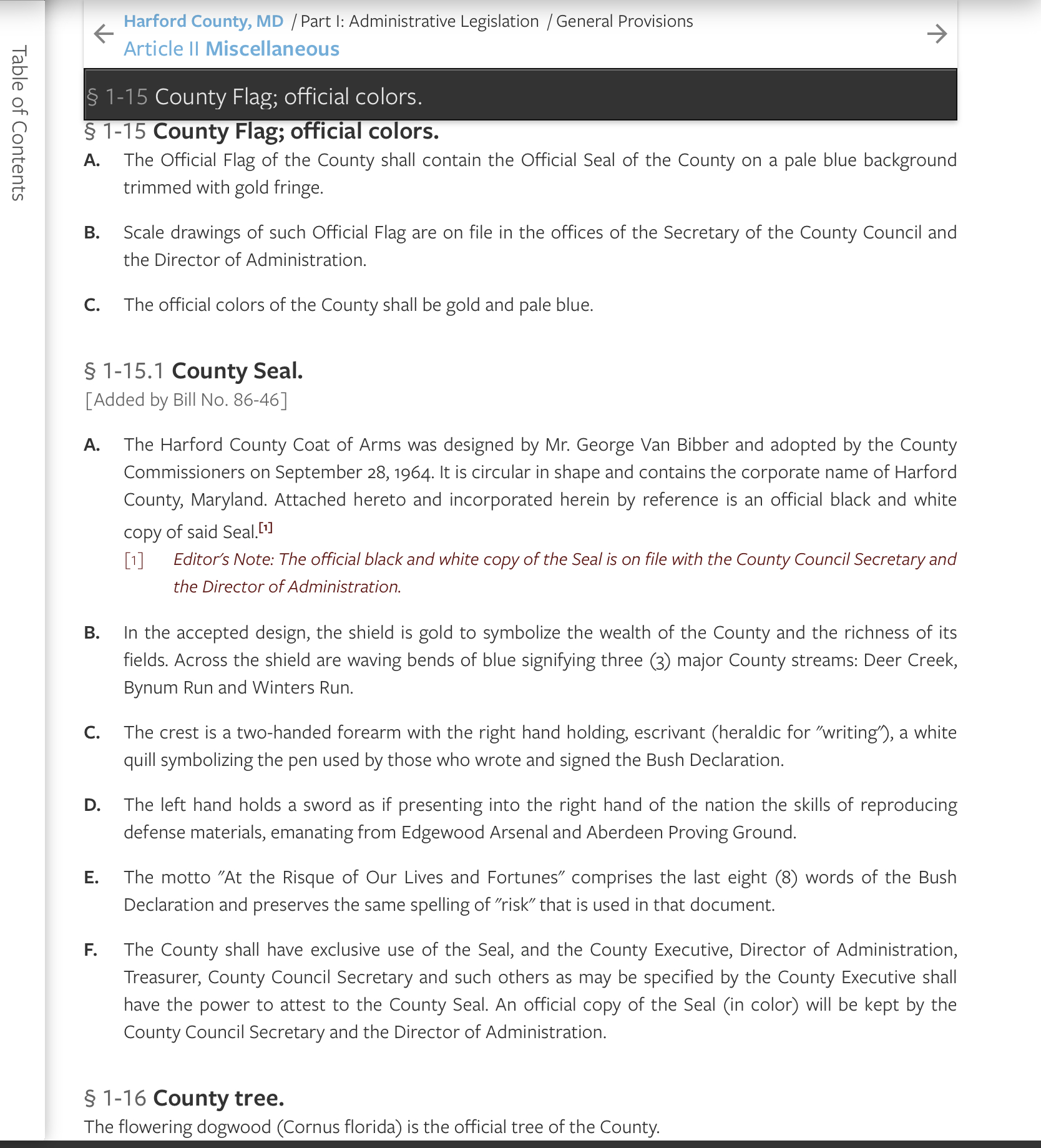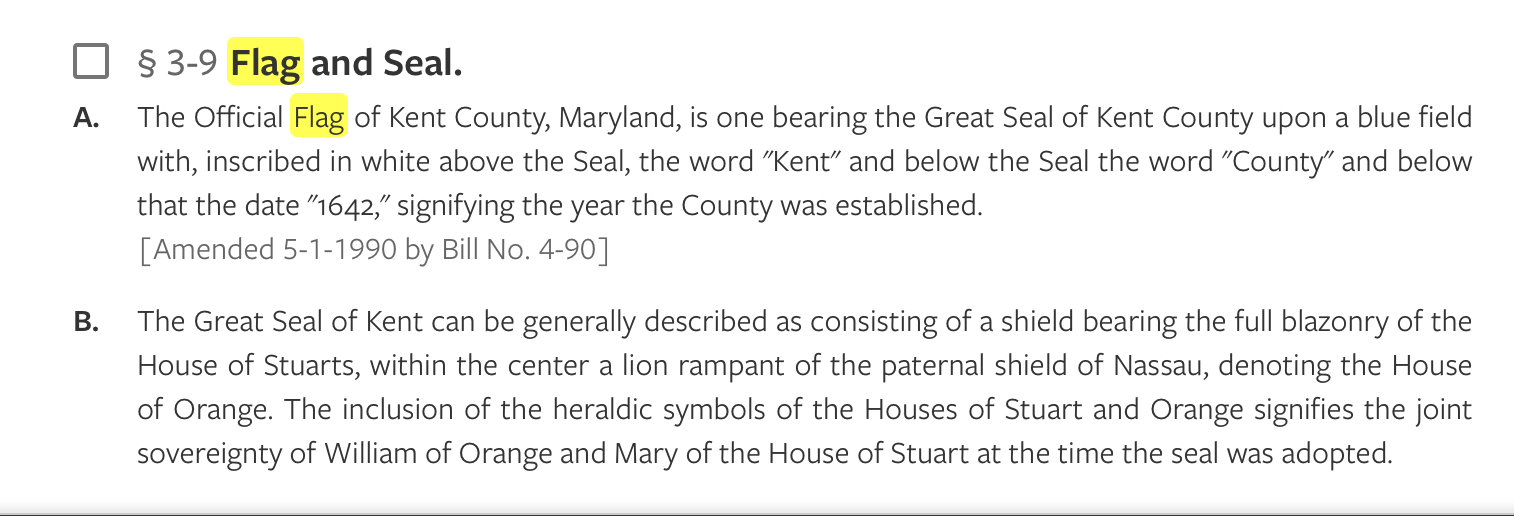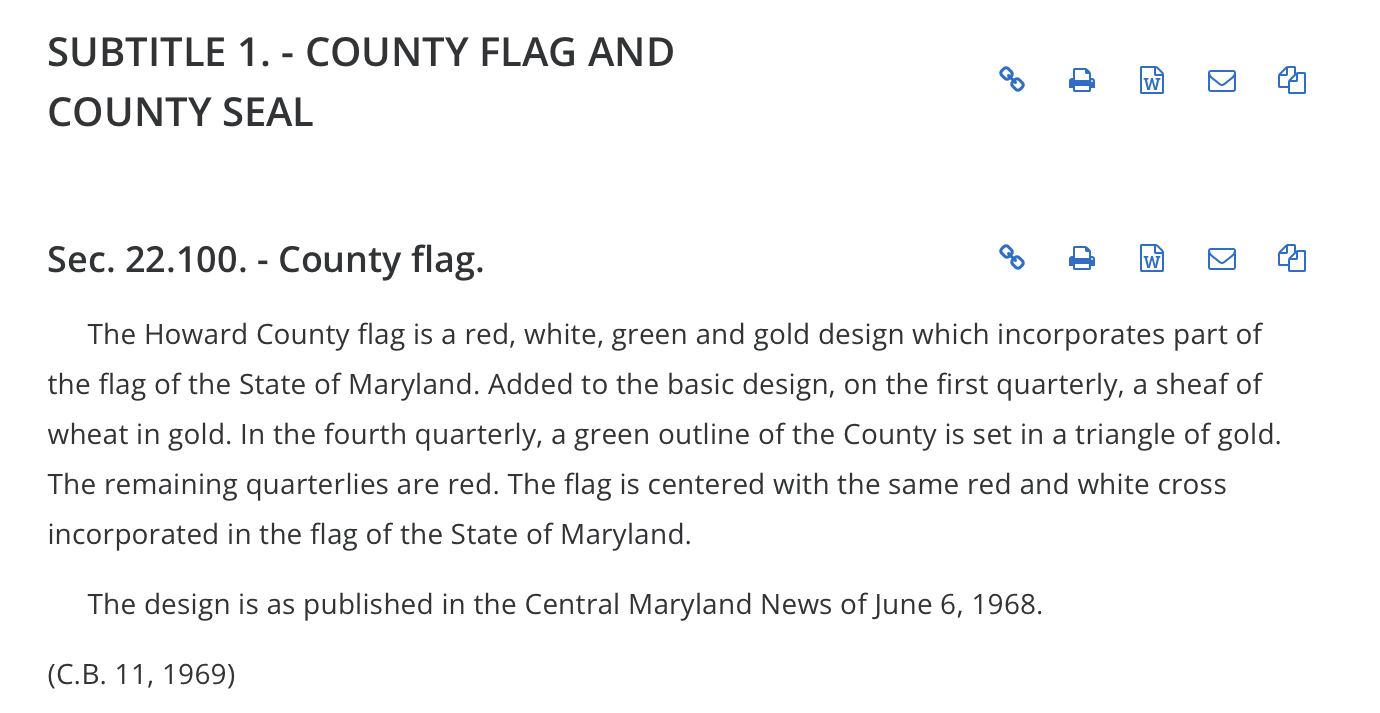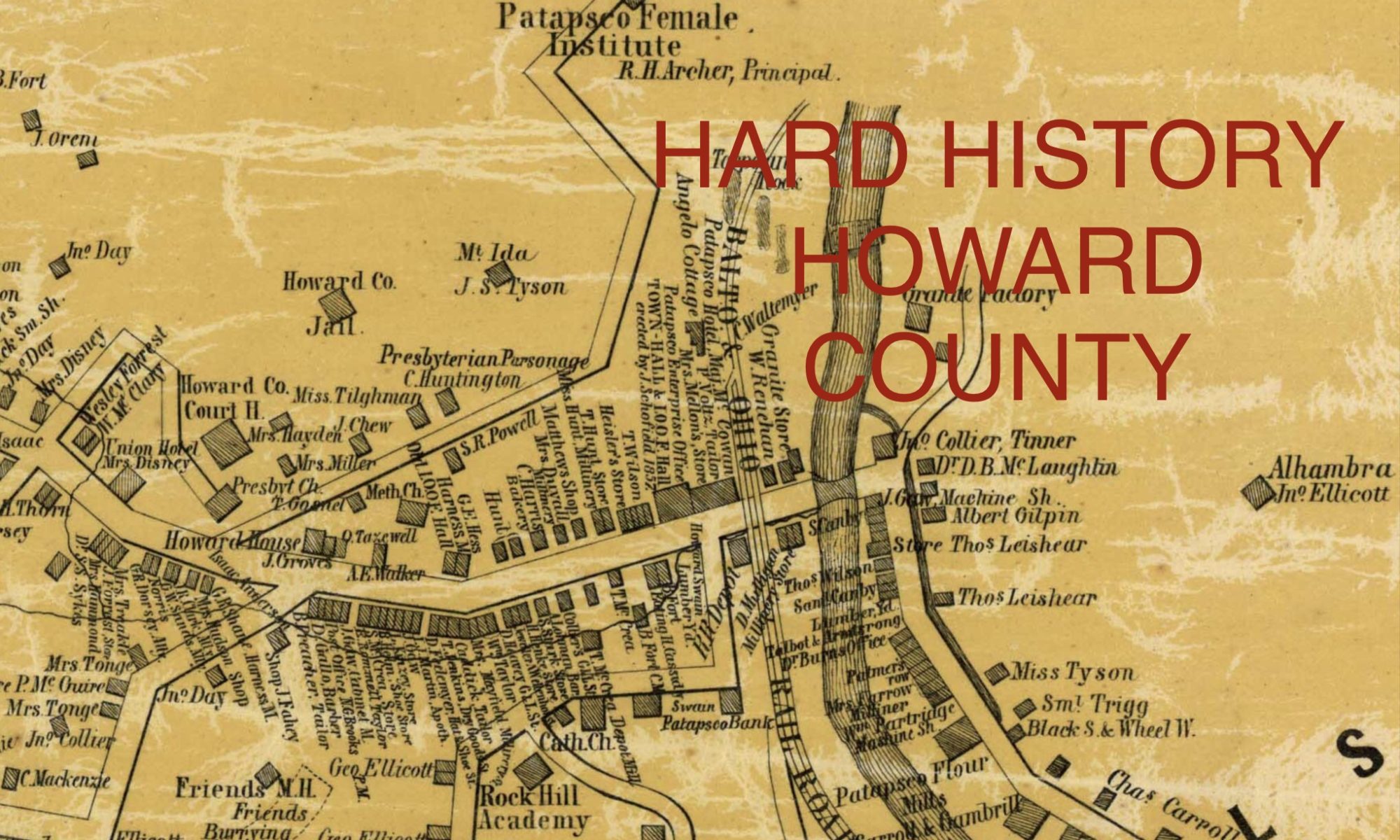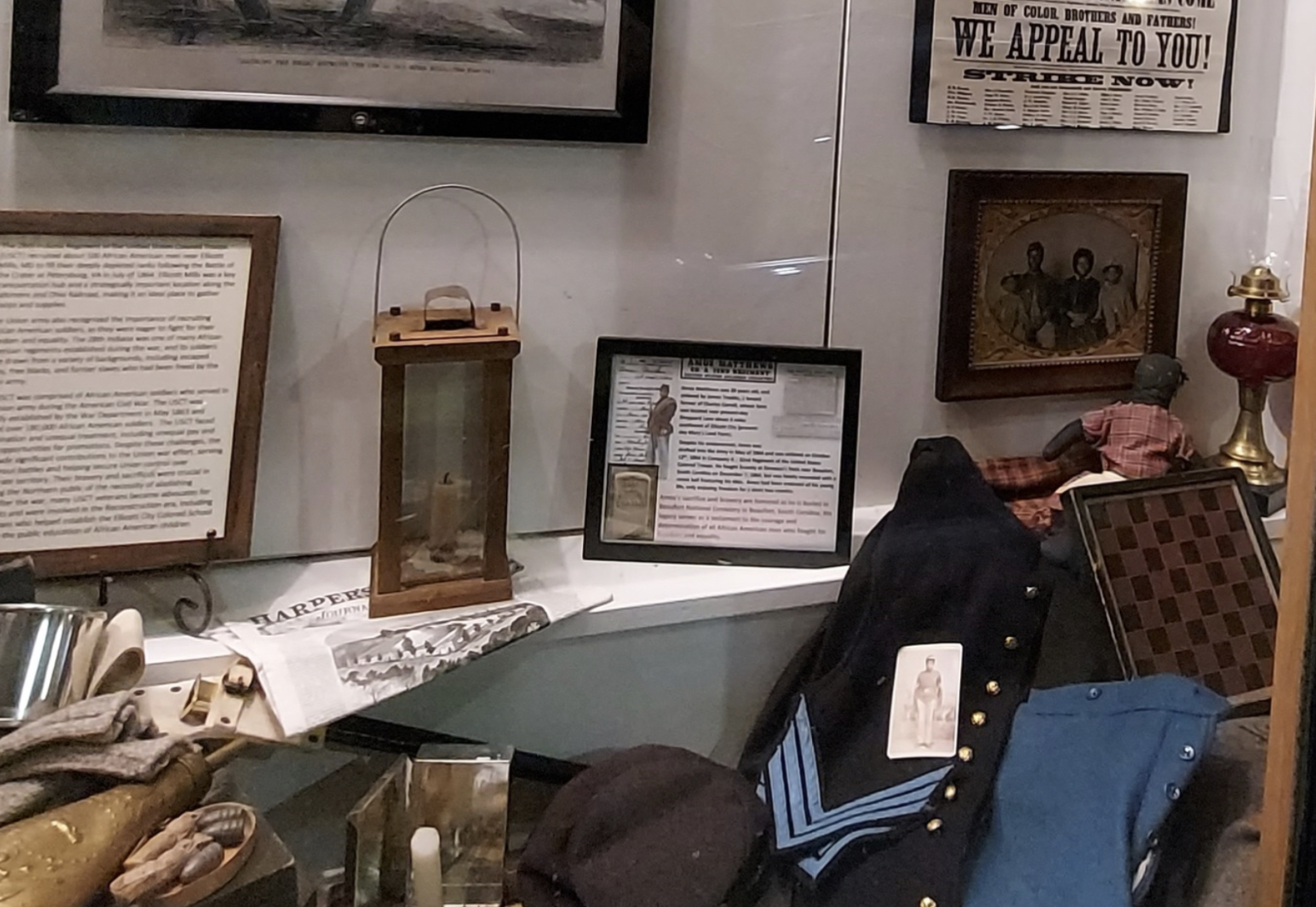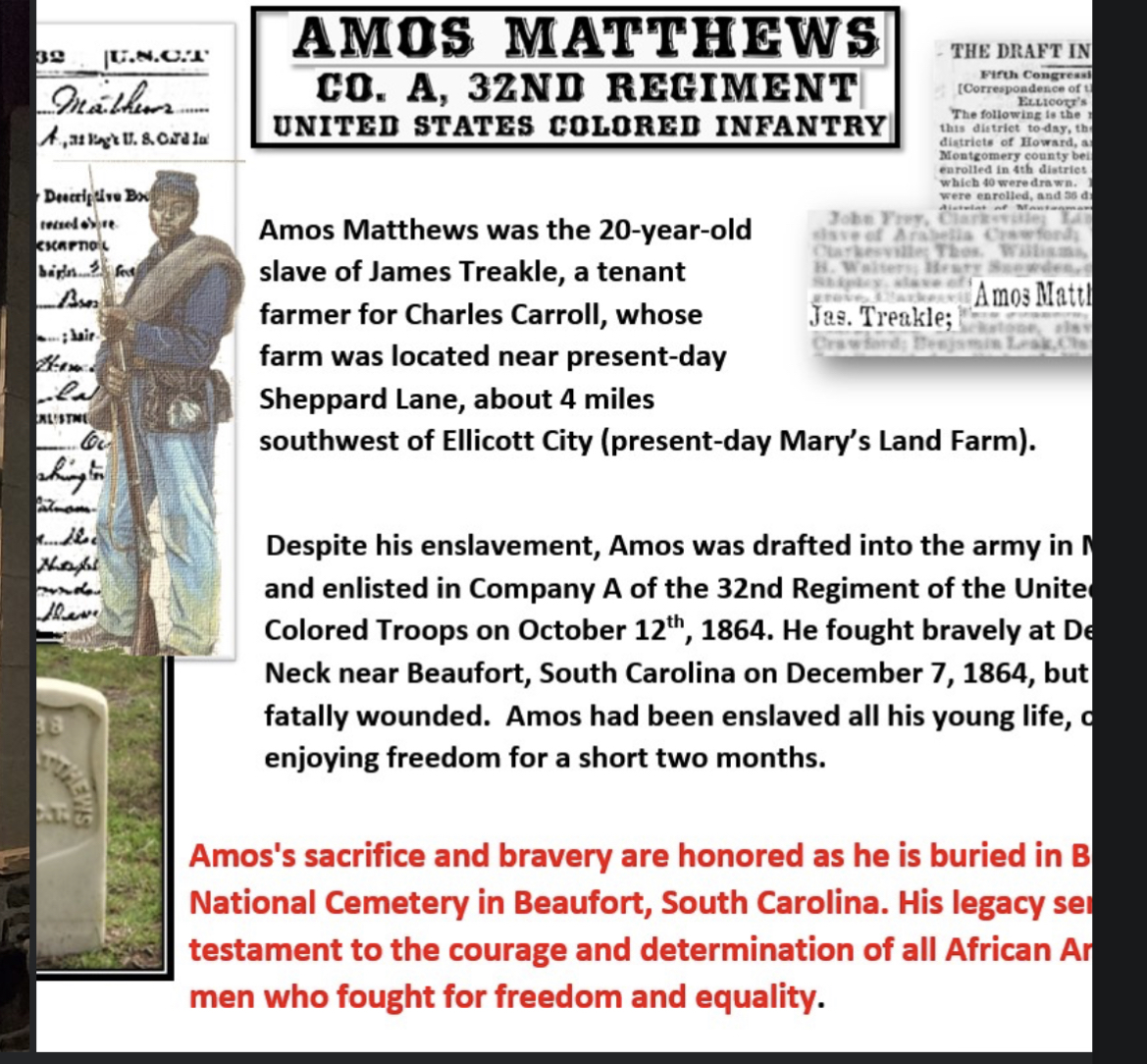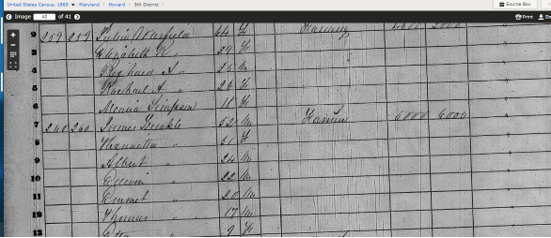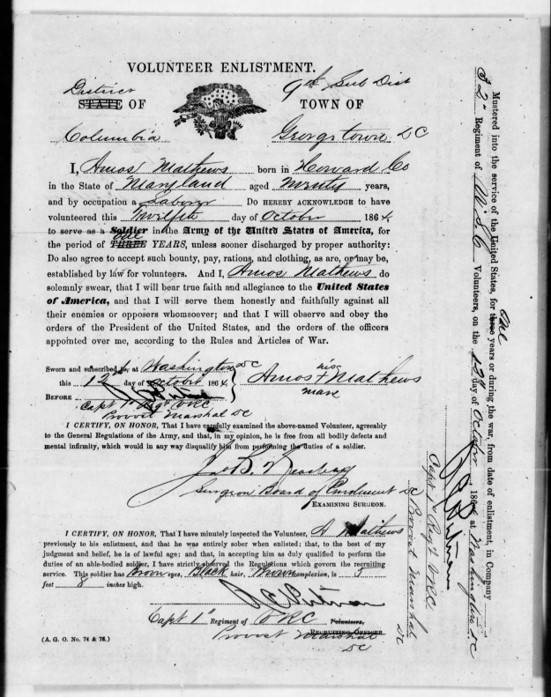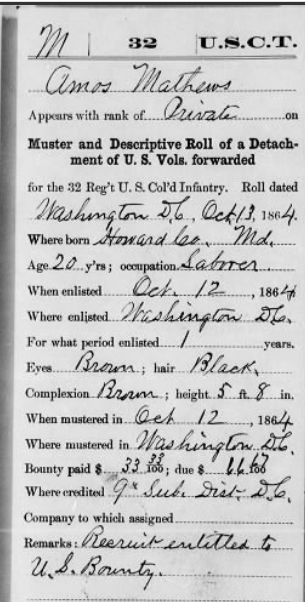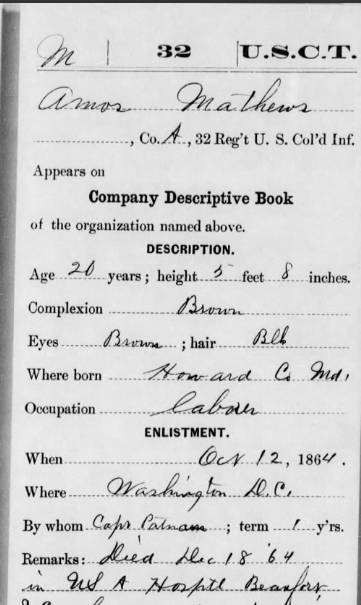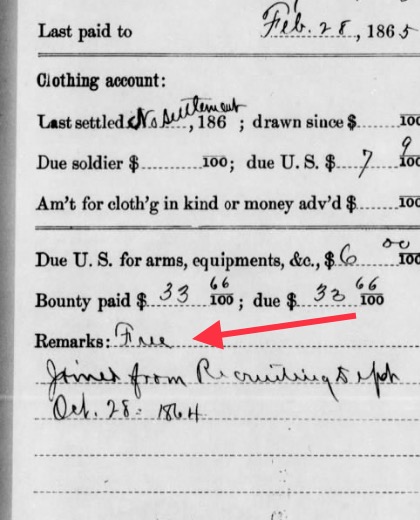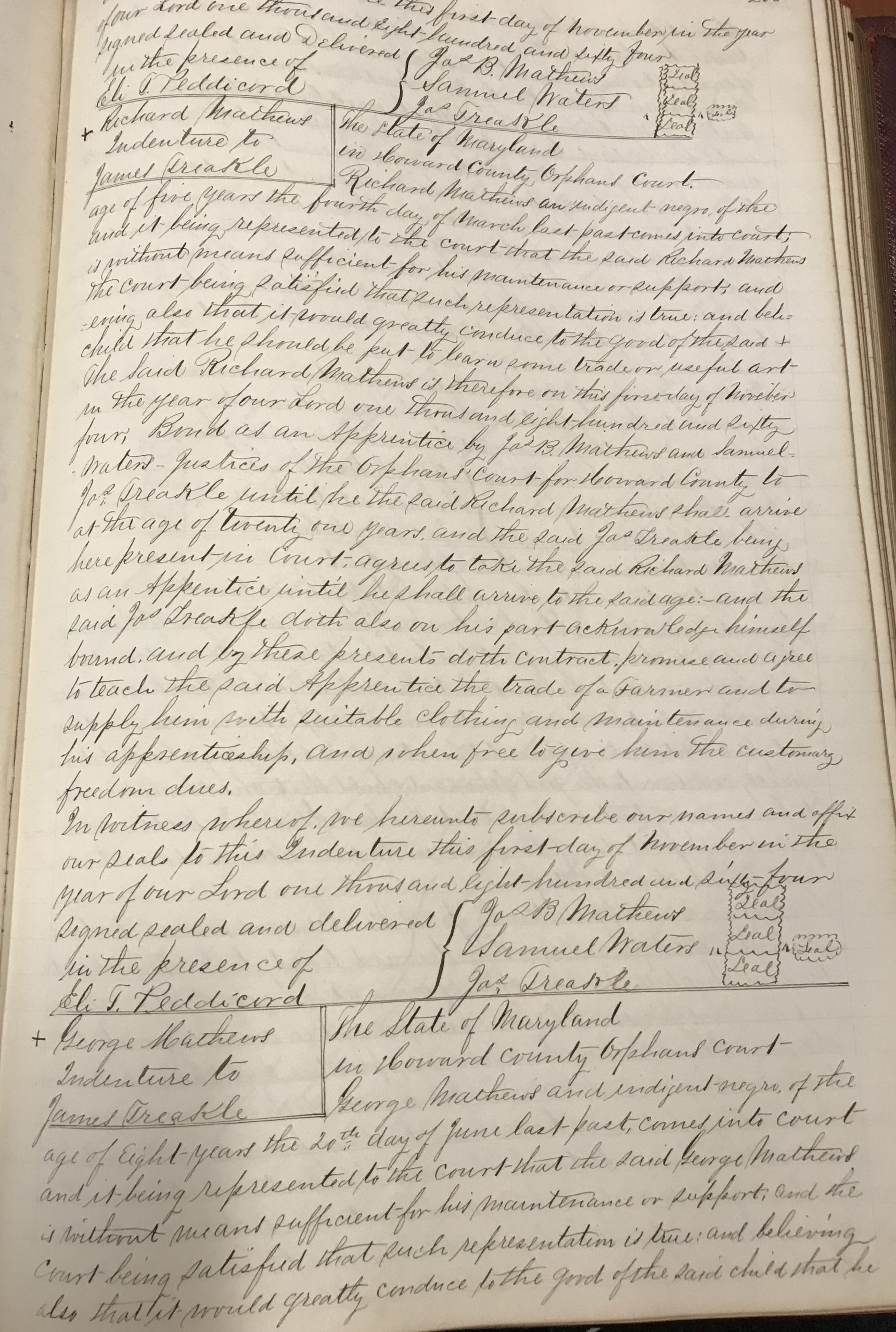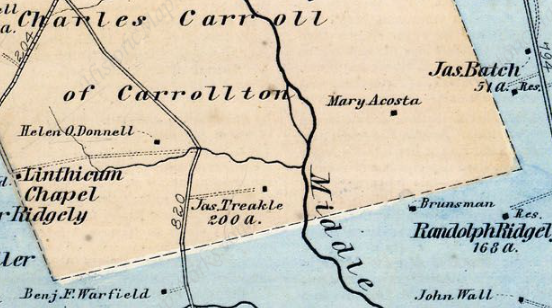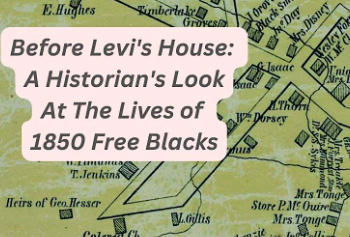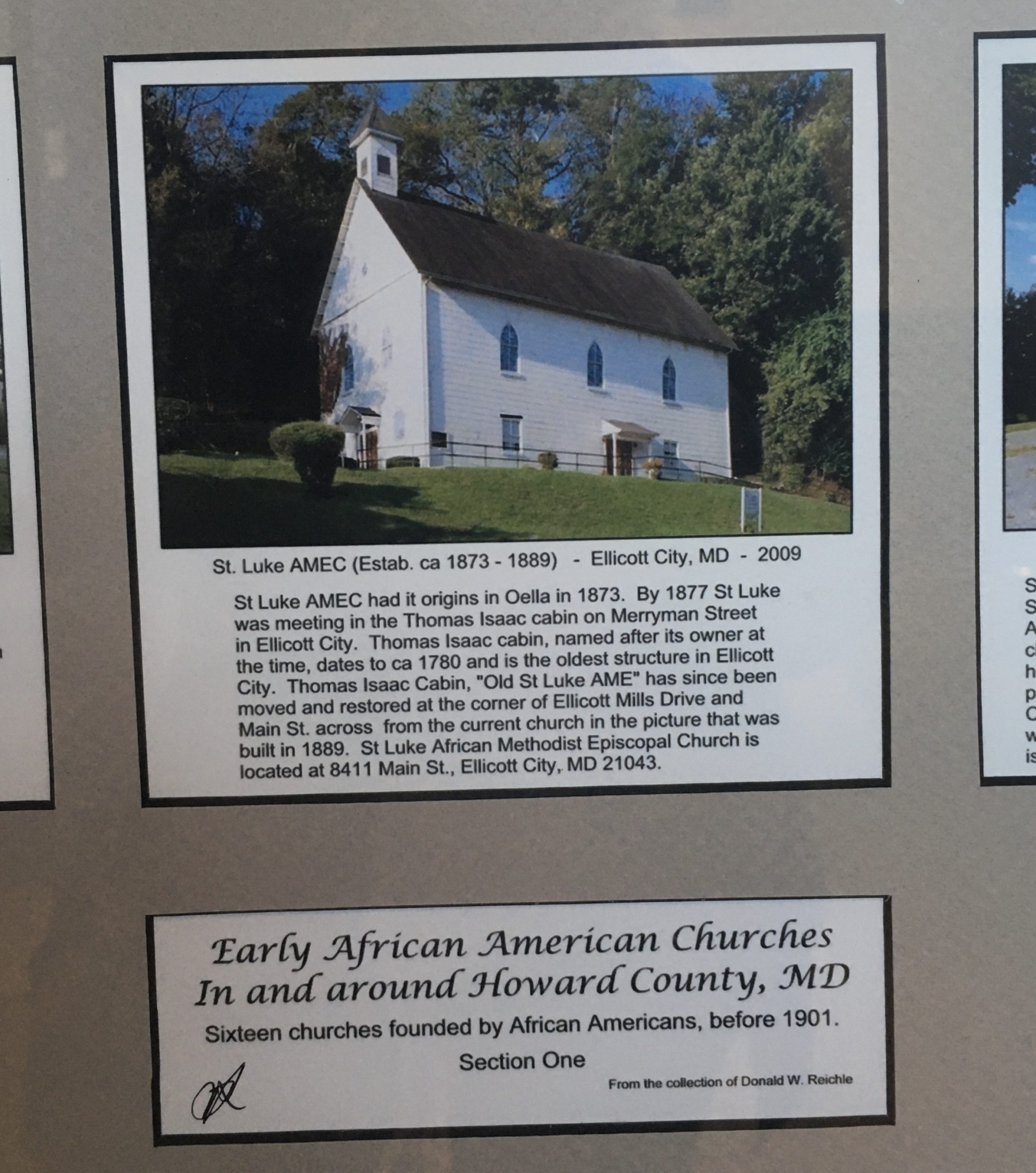
Our nonprofit’s change was always coming, and we now announce and celebrate it. A lot has happened through the years that had led to our “why”, but if you just want to know about our new name and logo (the “what”) go to the bottom and you’ll read/see it. Click on any pictures in this post, and they’ll get larger for you.
From the moment that an ad-hoc group of us formed locally in response to Maryland’s creation of a lynching truth & reconciliation commission, we knew that there was a big job ahead regarding Howard County’s history. NO, that history didn’t just involve one young man named Jacob Henson, Jr. as many seemed dedicated to perpetuating. There was legally-sanctioned hanging activity here that went on into the 1900s, but there was also a time here when Black and white people worked together to try to save the life of a Black man named Amos as the county was being formed into its own entity in 1851. Threats of lynching happened here too into the 1900s.
Compiling the accurate story of lynching activities in the county took a lot of time, and that’s because many of the records that exist aren’t physically located in the county. In the meantime, we also worked to show other county history relative to the existence of slavery here. Why? Because we kept encountering people who had no idea that it existed in the county or Ellicott’s Mills where the “Quaker Ellicott brothers” came to set up shop in the late 1700s and it therefore couldn’t have existed there (as the prevailing narrative went). When we encountered someone from the local historical society responding publicly to our work with “We know about George” (Ellicott) but doing nothing visibly to depict him to visitors and students with the truths about him, a decision was made to enter the history realm as a local nonprofit just like they are to provide assistance that we believed was clearly needed. Desired is another matter.
Fast-forward to this past Black History Month 2025 when some of the research of this history nonprofit’s Executive Director was conveyed at the request of the then Executive Director of that other local history nonprofit at the headquarters of the only history nonprofit that was invited to have a presence in the county’s only public “Historical Center” (also the only county public library ever able to be named after a person here). Many of us have been wondering for some time how some history has been and continues to get celebrated/uplifted here, while other history isn’t. It’s a function of POWER, rooted in history. The power to tell stories that get amplified is as old as time itself. Once upon a time, you’d find a stump (or bring your own device) to simply deliver your discourse upon and hope that you were able to reach people who cared to stop, listen and maybe act upon. Over time, you’d try your luck at getting into the newspaper or a 30 second TV spot. Now thanks to the internet, you can have your own stump/podium again and it is virtual which lets you reach more people although those pathways are crowded with a dizzying barrage of messaging that some understandably opt not to try to use. Having the “likes” are nice; seeing the metrics about how many you are reaching regardless of the “likes” is better, I think. During Black History Month in 2025, scholarship was presented revealing that it wasn’t “just George” who engaged in enslavement, proven by a 1840s document showing Andrew Ellicott mortgaging several enslaved people. Will children here learn the history that their parents didn’t?
While I remain grateful for the opportunity extended by the county historical society to reveal what is a fraction of the research I’ve been doing about the county, it’s challenging to not see how power has operated here when it comes to the formative time in the county’s history. It got discovered and revealed in the work of the county’s second Public Spaces Commission (via 2022 Report Evaluation and Action Commission) that a 2004 focus group revealed a desire to be able to “Research local history and my family’s genealogy” and that some “would like to see the historical society and Columbia Archives more a part of the library.” The Commission found that since the year 2010 ONE history nonprofit (historical society) gets to operate while paying no rent in one of the most utilized buildings in the county public library system, while the Howard County Center of African-American Culture, Inc. has to use the resources it has to pay rent to the Columbia Association. It’s public information, so I’ll also write that the historical society has funds totaling almost $750,000 as of the end of 2023 that they count as assets. They’ve been around for a long time, so maybe that’s to be expected though surprising. It’s also impressive, and I think they’re “set.”
Some local history: In the year 1916, it was reported that ex Governor Edwin Warfield was once again the president of the Maryland Historical Society (had been so since 1913 and until his 1920 death). He and others had an understandable interest in the public acknowledgment of the Civil War history here regarding their relatives who served in the Confederacy. There’s a long story about the planning for a monument to the Confederacy here that involved James Clark, Sr. who was instrumental in getting legislation passed in the General Assembly to change Ellicott City’s charter so that it’s Mayor and City Council could acquire or receive land to create a public park where the monument could be built. The legislation was enacted in 1914. (Chapter 836, #68) In 1935, Ellicott City’s charter was revoked by the General Assembly. A monument to the Confederacy was eventually installed in the then front of the Howard County Circuit Courthouse in 1948.
The Brown v Board of Education holding that racial segregation in schools was unconstitutional was decided in the year 1954. That same year, a white man named Eugene Bryant was sentenced to be hung by Judge James Clark, Sr. He was found guilty in the Ellicott City court of murdering his pregnant girlfriend. When the report of his appeal got written, it was being called “barbaric punishment” to be hung. Judge Clark had just died. On November 15, 1955 the Sun newspaper reported that the Maryland Governor commuted Bryant’s sentence. Change to the way things were done was ahead, though some of us know that they were trying to exercise that same compassion to Amos in 1851 though it failed. And to Jacob Henson, Jr. to a lesser degree. Nicholas Snowden is just written off here by many, despite never having received his day in court. Many of us don’t like that.
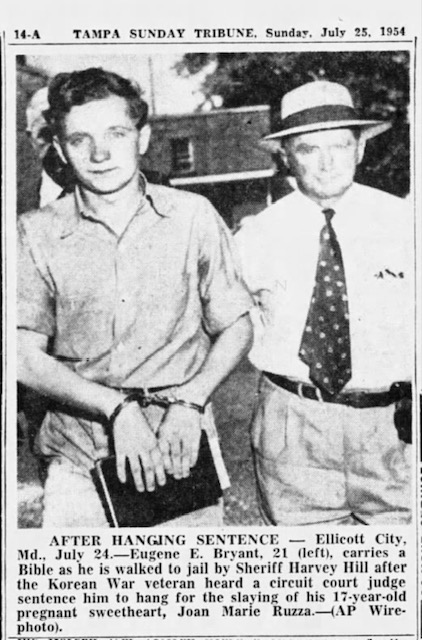
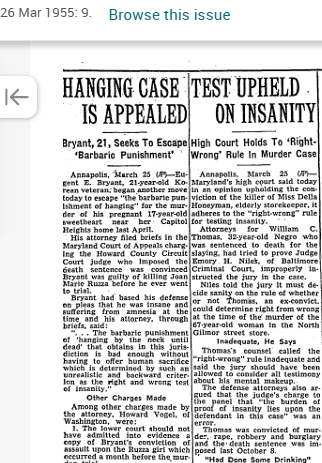
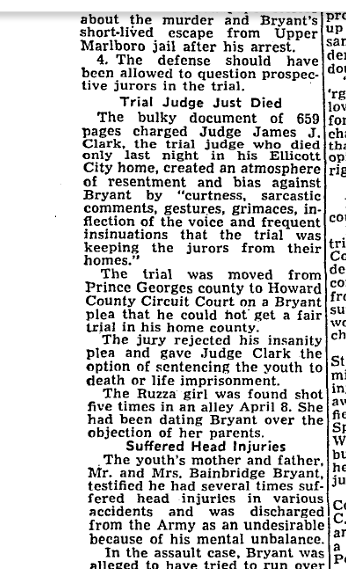
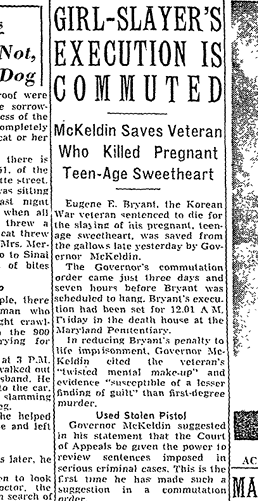
In 1957, the Maryland Court of Appeals ruling regarding a school desegregation case was published in The Daily Record. Howard County citizens filed suit to try to block school desegregation from happening, but lost. The following year as the desegregation of public schools in Howard County dragged on, an entity called the Howard County Historical Society, Inc. was organized in 1958 by corporate charter and has primarily been crafting the history narrative here on certain county history ever since. They referred to themselves as “somewhat as an affiliate of the Maryland Historical Society” in their early newsletters. The MHS was formed in 1844, and as they wrote about themselves on their website: “Politics, wars, and the lives of notable men gave way to research and fascination with previously neglected fields such as women’s history, black history, and ethnic histories.” leading them to rebrand and change their name in 2020 “..for the future as an inclusive “center.” That Society is now know as the Maryland Center for History and Culture. The Howard County Society’s first president was the widow of Judge James Clark, Sr., Alda Hopkins Clark. She purchased an Ellicott City church (old First Presbyterian Church built in 1894) for the Society which was referred to as the Museum of the Historical Society by them. At one point, they referred to themselves as a “quasi-governmental agency serving the county.” An April 1988 HCHS newsletter carried the story of the Society’s founding, in the words of Clark descendants.
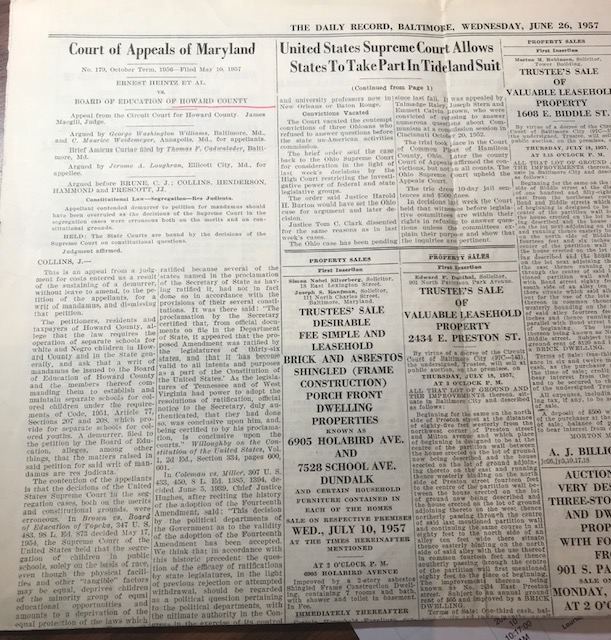
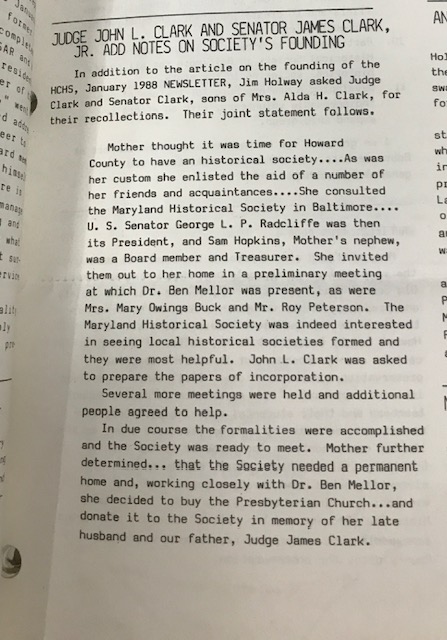
There has always been an official Howard County Interracial Commission or some iteration of the name since around the early 1960s. The first Commission of Human relations to be established outside of Baltimore was appointed by the Montgomery County Council on July 12, 1960. In Howard County, a non government sanctioned citizen committee was known to have existed at that time. In 1961 the First Regional Conference on Race Relations for the State of Maryland was held in Rockville, MD. Howard County was represented there. Most people don’t know about these activities, despite some of the people still being alive today. There’s a lot to be told and learned about how Howard County evolved into the place we all now experience. The lack of records here is striking, and a hindrance to those of us working to make the history here accurate. The work to bring history to the county involves others with and without corporate entities, so this list that follows isn’t exhaustive:
In 1992 the Howard County Center of African-American Culture, Inc. was incorporated. In 2002 the Friends of the Ellicott City Colored School Restored, Inc. was formed. Both worked to fill in the history gaps they saw here. In July 2002, the local historical society Board of Directors adopted a flag for itself that was designed by a Clark family descendant. The flag was “inspired by the headquarters banner of General Bradley T. Johnson.” Johnson had been a Confederate Brigadier General from another county, and it first seemed weird that the county historical society would seek to emulate him some research made it clearer: another Clark who did have roots in the county served under the General in the Confederacy. I respect the desire to acknowledge ancestors, and have no comment about the flag choice. It’s not on public property… and a private nonprofit can do as it wishes. People can choose to patronize ifthey wish.
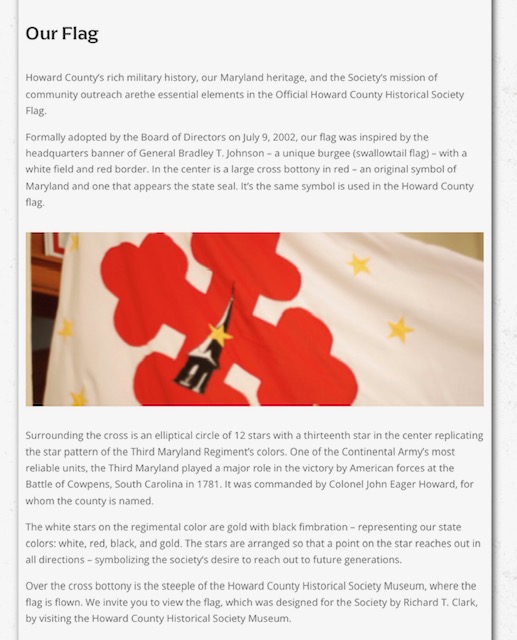
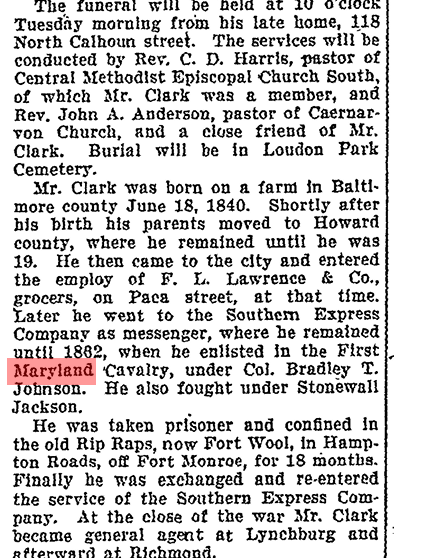
In 2017, the matter involving the Confederate memorial on the county courthouse lawn got publicly addressed when Allan Kittleman was County Executive. Information regarding a 1988 rededication of the monument and a protest was written along with other material that was sent to Kittleman and the then County Council members. A ceremony was in the back (which used to be the front door), where the monument was located, and demonstrators were singing, etc at the front. How it got there on public property in the 1940s in the first place, is still a mystery. Who had the power to put it there is the real question. Nevertheless, it’s a PUBLIC SPACE not a private one. The monument got relocated over to the local Historical Society’s space… which is PRIVATE. They are now the guardians and keepers of that Confederate monument. Change happens. It doesn’t even have the names of all of the county’s Confederate soldiers: only select ones. This was the state of local county history that our nonprofit came to be formed subject to. People don’t always like change, but it happens anyway.
Since the new federal administration has taken office, people have been calling/texting and emailing to ask how our nonprofit is faring. Two images will be used to give the answer:
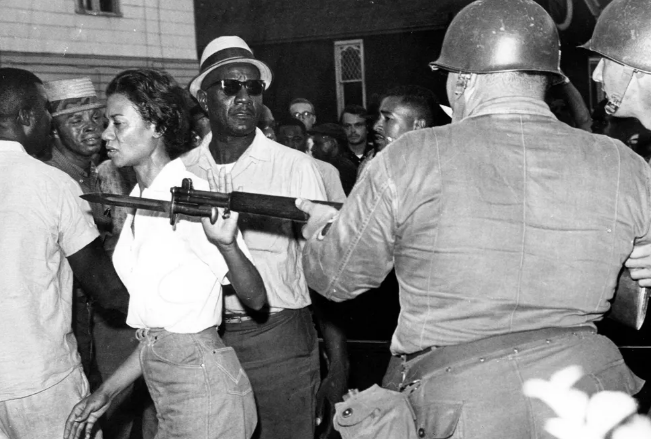

We’ve always understood that there are those here who adopt the “history is written by the victors” mentality. Our nonprofit doesn’t care about the “anti-DEI” efforts though we can see the people who seem to be emboldened by them. Despite the change of our name, our focus remains firmly grounded in our foundation: TRUTH. Our village contains the people in and outside of the county who feel the same. I think we’re good. If the primary source records we exclusively deal with are not believed and therefore incorrect, then does that mean they were falsified by the people who created them? A graphic about Lonnie Bunch III and a man featured in the Baltimore Banner digest for 4/15/25 convey our nonprofit’s sentiment and mentality. Our people are out there, and I’ve got no double they will continue to support our work.


Personally, I think there’s a problem when someone loves the fact that in America there were “Patriots” who wanted freedom from Britain’s rule and fought in what is called the Revolutionary War but dislikes or resists adopting the fact that Black and Mulatto people also fought in various ways for their family and friends’ freedom from enslavement and the right to participate in society as they saw born and naturalized American citizens doing. Whenever I encounter the resistance in people, I appreciate that it’s out in the open for display. It takes time to understand why people believe and feel as they do, as well as patience. It’s unfortunate that everyone’s not teachable, particularly adults. Is the resistance because they were never taught in school or at home that people like Levi Gillis (a Mulatto man who was born free around the year 1820) existed who married, had children, worked for wages, moved to Ellicott’s Mills, and bought land from a Black man who had purchased it in 1834 (he was born free around the year 1790) to build a home for his wife and children in 1851?
When our nonprofit facilitated the research initiative that made the discovery regarding Levi and Eliza Jane Gillis’ log home relocated to Main Street in Ellicott City, I didn’t know what the overall response would be to it. Through presentations at schools, etc and walking tours provided, I could see the full gamut of responses: excitement, surprise, disbelief, and even anger. Even after we packaged and published the research into a book for others to learn from, I’ve watched as the log home went from being photographed multiple times a year with public officials proudly standing in front of it to make announcements to being ignored for the years since publication by them. While we remain grateful that HoCo Rec and Parks (via N. Mooneyhan and R. Delerme) placed our work inside of the Gillis home for the public’s consumption, it has been interesting to watch who seems to now avoid being photographed there. Is it because it has somehow lost its’ appeal? Is it now controversial (and therefore to be avoided by elected officials) in that it may make people THINK about how their history has been (and continues to be) generated for consumption by our students and visitors? Is it not worthy for our first Black Governor to visit? When you encounter the newest HCC Board of Trustees member H. Russell Frisby, Jr. let him know that you heard about his ancestor Levi Gillis and his log home now sitting on Main Street. He graciously provided our nonprofit a photograph of the 1882 marriage announcement between Katie Gillis and Hezekiah Russell for inclusion in the book our nonprofit published.
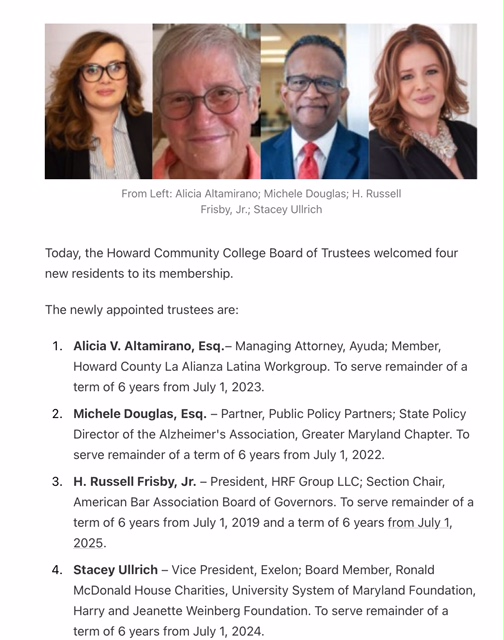
Kate was Levi and Eliza Jane Gillis’ daughter, and had been born around the year 1857 (possibly in their Ellicott’s Mills log home). Kate and Hezekiah had a son named George Levi Russell who was born in the late 1890s. By the 1900 census, they were all living in Baltimore. In 1940, George married Marie and had a son they named George Levi Russell, Jr. That George became the first African American to sit on the Circuit Court in Maryland and just died at the age of 96 and was featured in today’s Baltimore Banner newspaper. If you heard of Harbor Bank, that’s him. If you’ve heard of George Levi Russell, III, Chief Judge of the US District Court for the District of Maryland… that’s his son and Levi’s descendant. Levi lives on in their names.


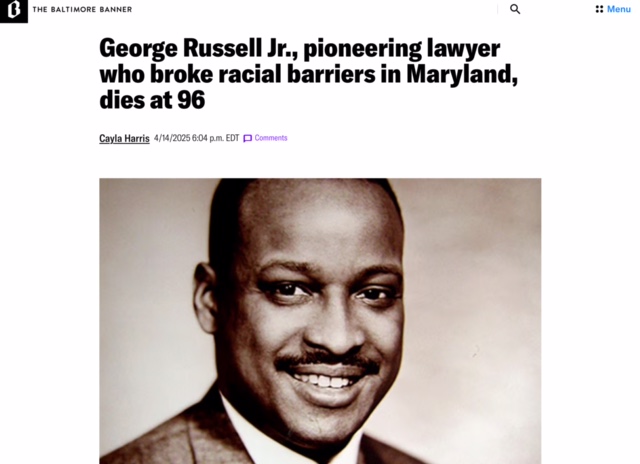
It is OUR county that has the distinction of being where the last living signer of the Declaration of Independence called home. 2026 marks the 250th anniversary of that signing, and our county will be acknowledging history here in various ways. A Work Group was formed by the County Executive to compile the plan. Though us researchers are blocked from entry onto the Signer’s plantation home property (Doughoregan Manor) despite taxpayers funding of $19+ million under a development rights purchase agreement executed by County Exec Ken Ulman in 2010 (extended in 2020 and set to expire Sept 2025), some of us will be working to convey some of the truths regarding him. Though their real estate is private, the history is not. Change happens.

What’s our new corporate name? Drumroll please… After much deliberation about the state of things in our country today, our nonprofit board deliberated and decided on the following name which made the most sense given what we are actually known for and do:
HoCo Roots Revisited, Inc.
Here is our new logo:
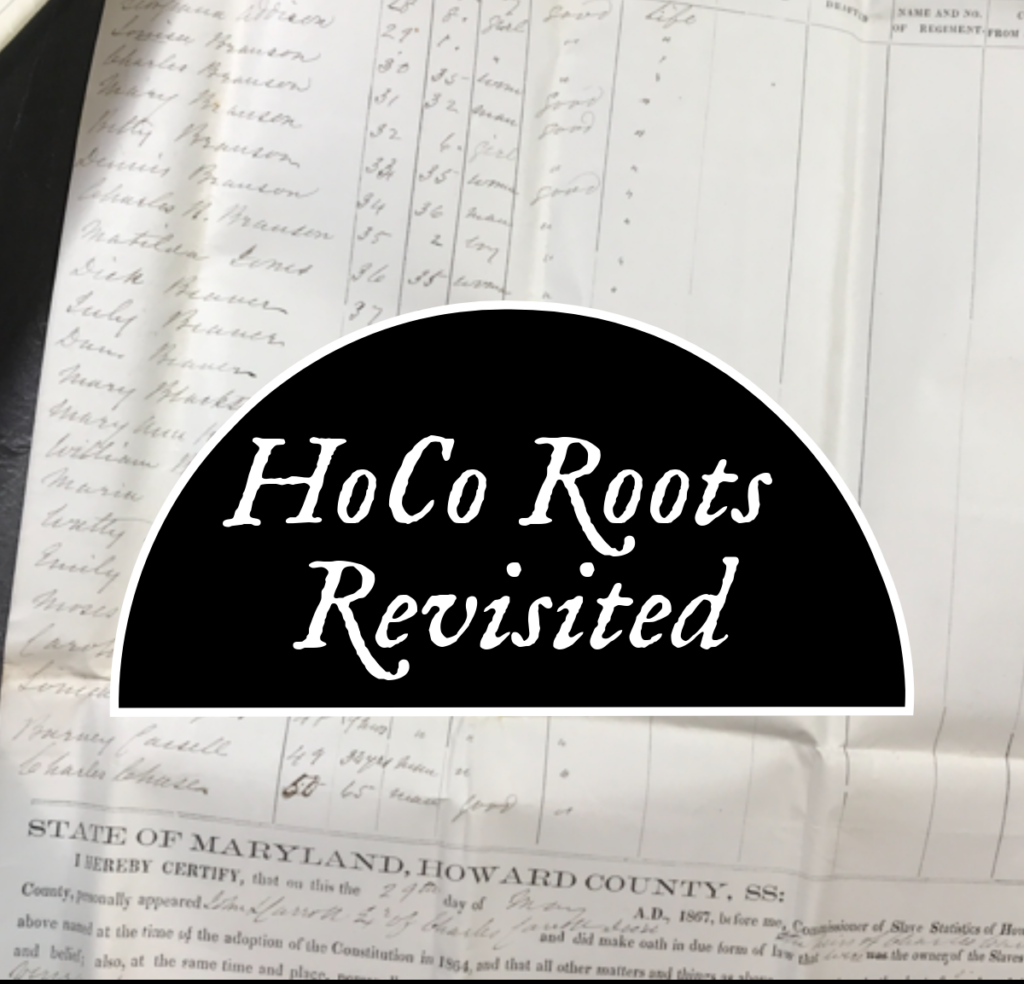
What it symbolizes:
In 2024, an amazing set of records were discovered quite by accident at the Maryland State Archives while I was researching there. As the Civil War was ending and slavery was abolished in Maryland by the voters in 1864, there were some people who weren’t happy about losing their enslaved workforce. The new 1864 constitution abolished slavery, but it got revised in the year 1867. In that update was the provision that a Commissioner of Slave Statistics get appointed in various jurisdictions because “under the Military of the United States, a large number of slaves owing service to loyal citizens of Maryland, were induced to leave their owners and enlist in the military service of the United States.” The General Assembly ordered that a listing be made of any slave owners desiring compensation and those they were enslaving as of November 1, 1864, and some of the jurisdictions have compilation books of the time. Howard County has always had a book at the state archives. What was discovered were the actual handwritten loose documents from the enslaver wishing to be compensated. In the background of our logo is one of the pages photographed that was completed by John Lee Carroll, who was processing the estate for his deceased father Charles… grandson of the last living signer of the Declaration of Independence. John Lee Carroll wasn’t yet the Governor (would be in 1876). Why this particular page (there were several)? Because if you look carefully you’ll see that there are FOUR people named Charles in the image. All are important.
- Charles Chase, freed at the age of 65 years old who was recorded to be a slave for life
- Charles Branson, freed at the age of 2 years old who was recorded to be a slave for life
- Charles Branson, freed at the age of 32 years old who was recorded to be a slave for life
- Charles Carroll V whose estate they had all belonged to when he died in 1862
We have been revisiting the roots of EVERYONE in the history of the county when we’ve had reason to. Change happens, and is good. While we work to fully transition into our new corporate identity and website, know that we’ve been planning for ways to bring this newly uncovered history to students, visitors and residents. We recently acquired VR headsets that will enable us to show you things that may or may not physically exist anymore or have a limited ability for people to visit! Wait until you see what we’re planning on showing you! Wait until you experience Levi’s Trunk… and read about Our Own 30 Harriets that were introduced last year!
Marlena Jareaux, Executive Director
The only constant in life is change.


